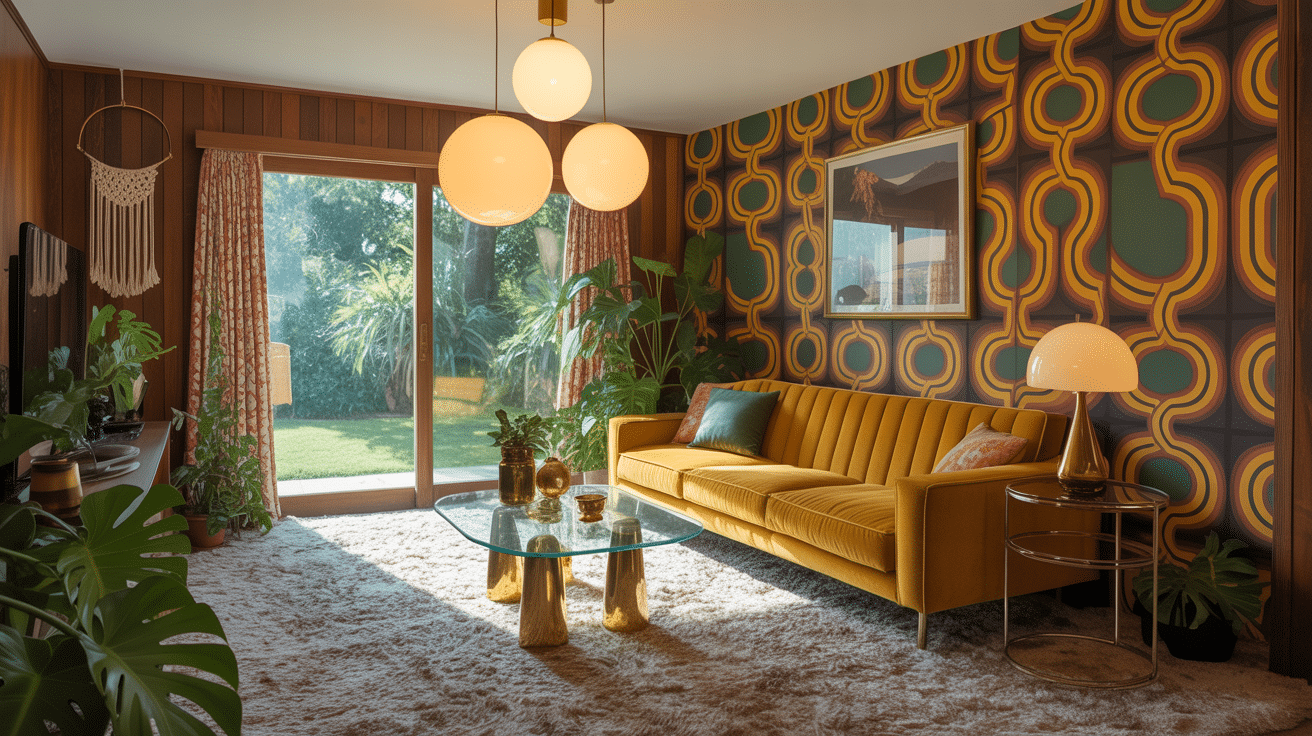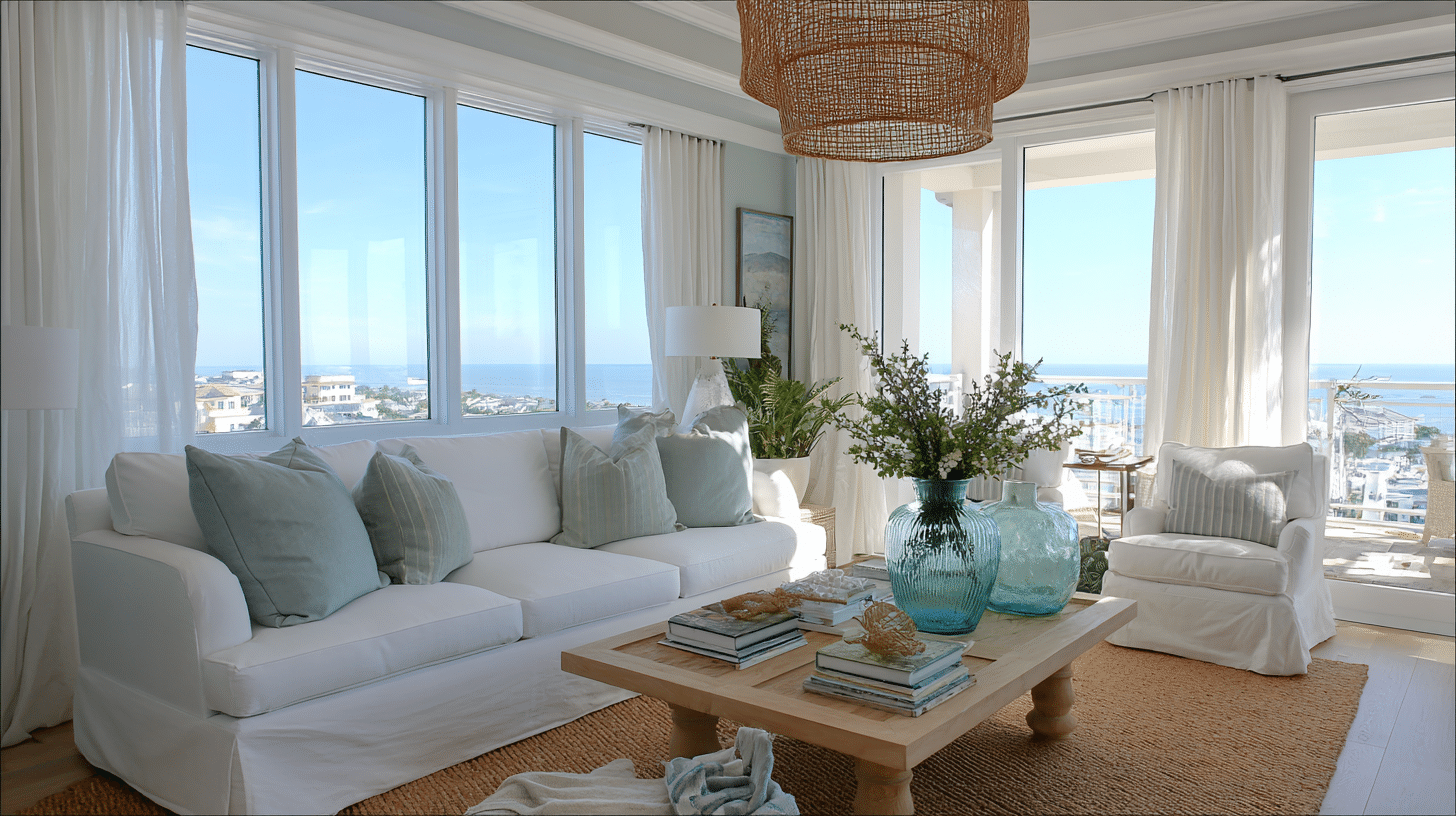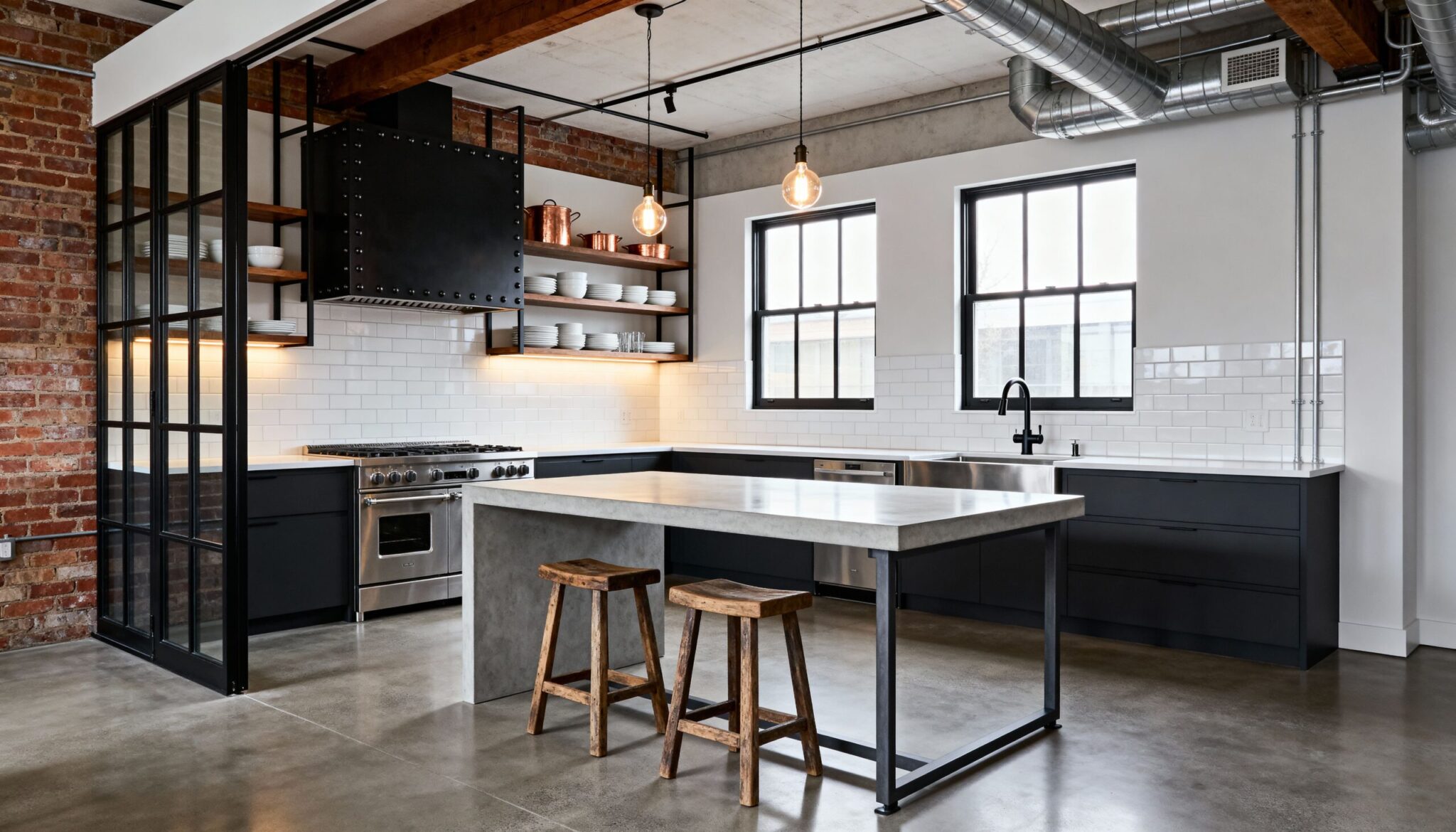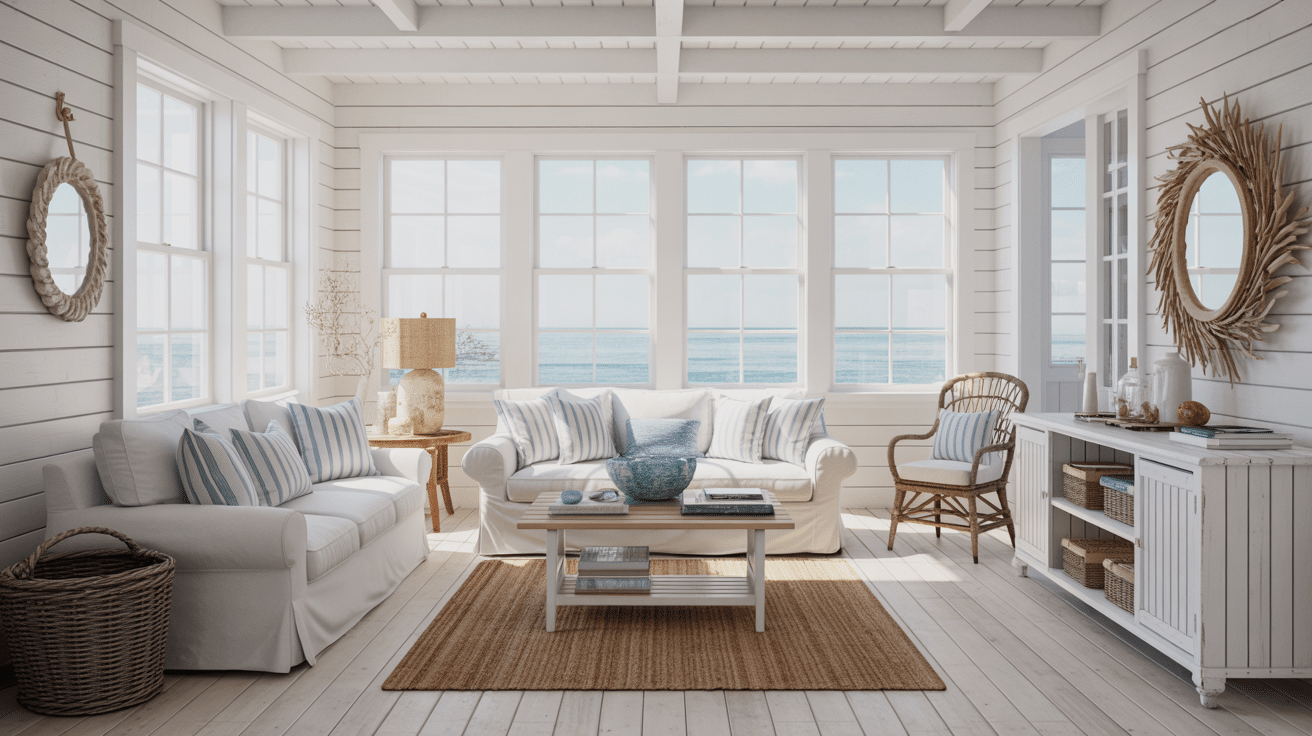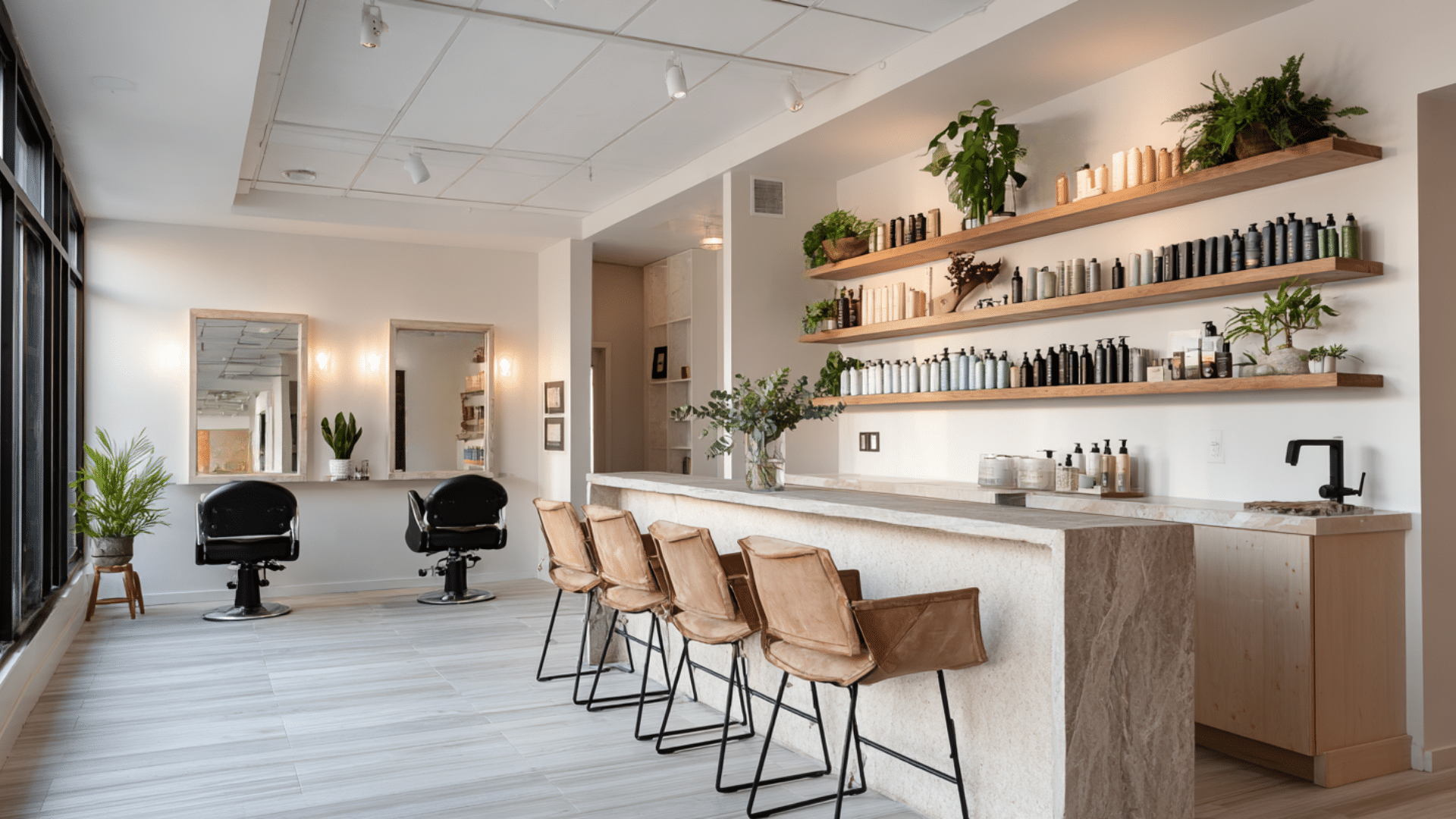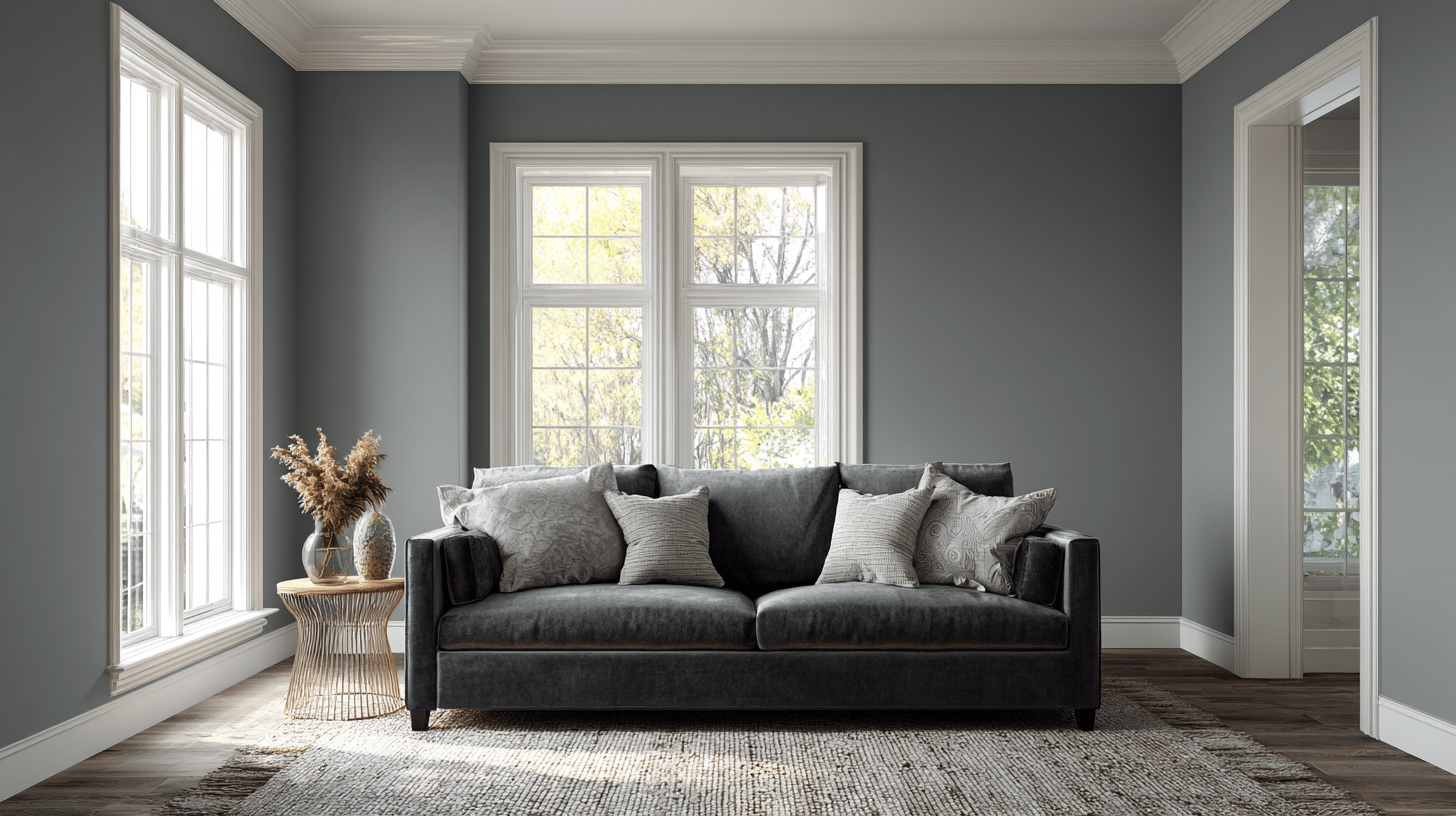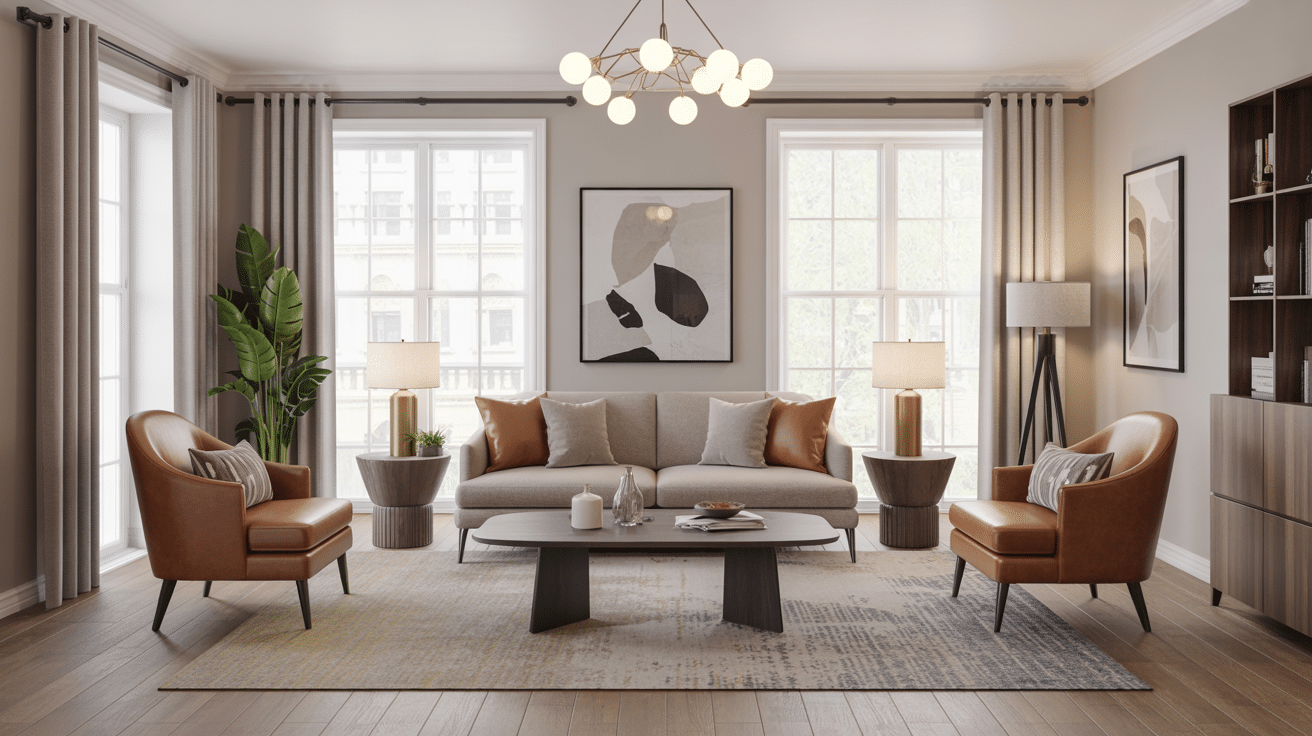The Roots of 70s House Interior Design
The 1970s brought a wave of change that profoundly altered people’s perceptions of their homes.
This decade wasn’t just about disco balls and bell-bottoms; it was a time when society broke free from rigid rules and embraced personal expression.
Pop culture played a huge role in shaping interior design trends. Music festivals like Woodstock inspired earthy, natural themes, while movies and TV shows showcased bold patterns.
70s interior design reflected a new mindset about comfort and individuality. The decade’s design philosophy centered on making homes feel warm, inviting, and personal.
Why has 70s Interior Design Returned?
The seventies are back, and modern homeowners are loving it. After years of cold, minimalist spaces, people crave environments that are warm and have personality.
- Nostalgia drives the trend: As people long for an era of freedom and creativity, social media showcases striking vintage changes daily.
- A perfect blend of old and new: It creates fresh yet familiar spaces. 70s interior elements add soul without overwhelming modern homes.
- Vintage pieces: They tell stories that mass-produced items can’t. Each retro find brings character and conversation.
- Affordability matters: Thrift stores offer unique pieces at reasonable prices compared to contemporary furniture.
Defining Elements of 70s Decor
The seventies had a distinct look that’s instantly recognizable. Bold colors, rich textures, and natural materials created 70s house interior spaces that felt both groovy and grounded.
| Category | Elements |
|---|---|
| Color Palettes | Mustard Yellow, Avocado Green, Burnt Orange, Rich Browns |
| Key Textures | Shag Rugs, Velvet Upholstery, Rattan Furniture, Wood Paneling |
| Popular Materials | Lucite, Chrome, Macramé |
Ideas for Decorating Home Interiors in the Style of the 1970s
The 1970s offered bold design choices that created warm, inviting spaces full of personality.
These ideas help you bring the 70s house interior style into your modern home while keeping it fresh and functional.
1. Bold Color Blocking
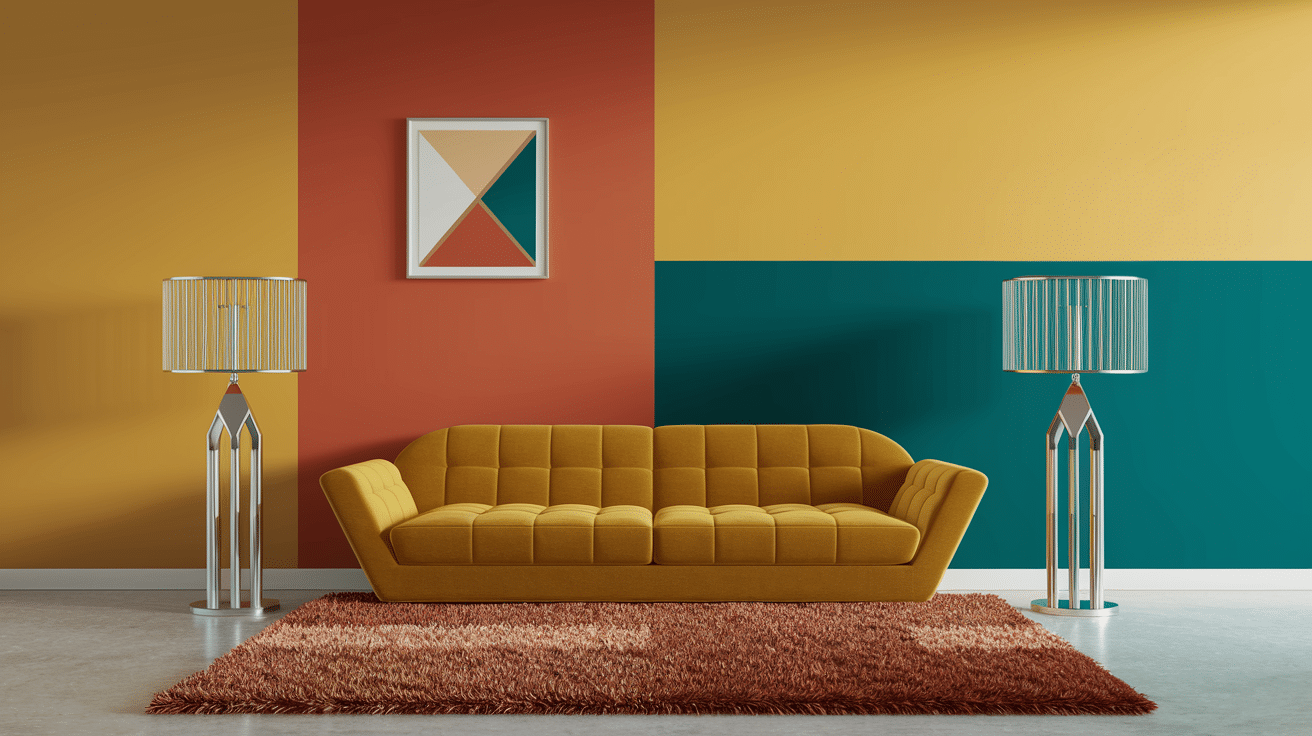
Bright, contrasting shades were used side by side to create playful walls and furniture. This trend celebrated freedom and creativity, making rooms look lively.
Pair mustard, teal, and orange together to capture that real 70s retro home vibe.
2. Shag Carpets and Area Rugs
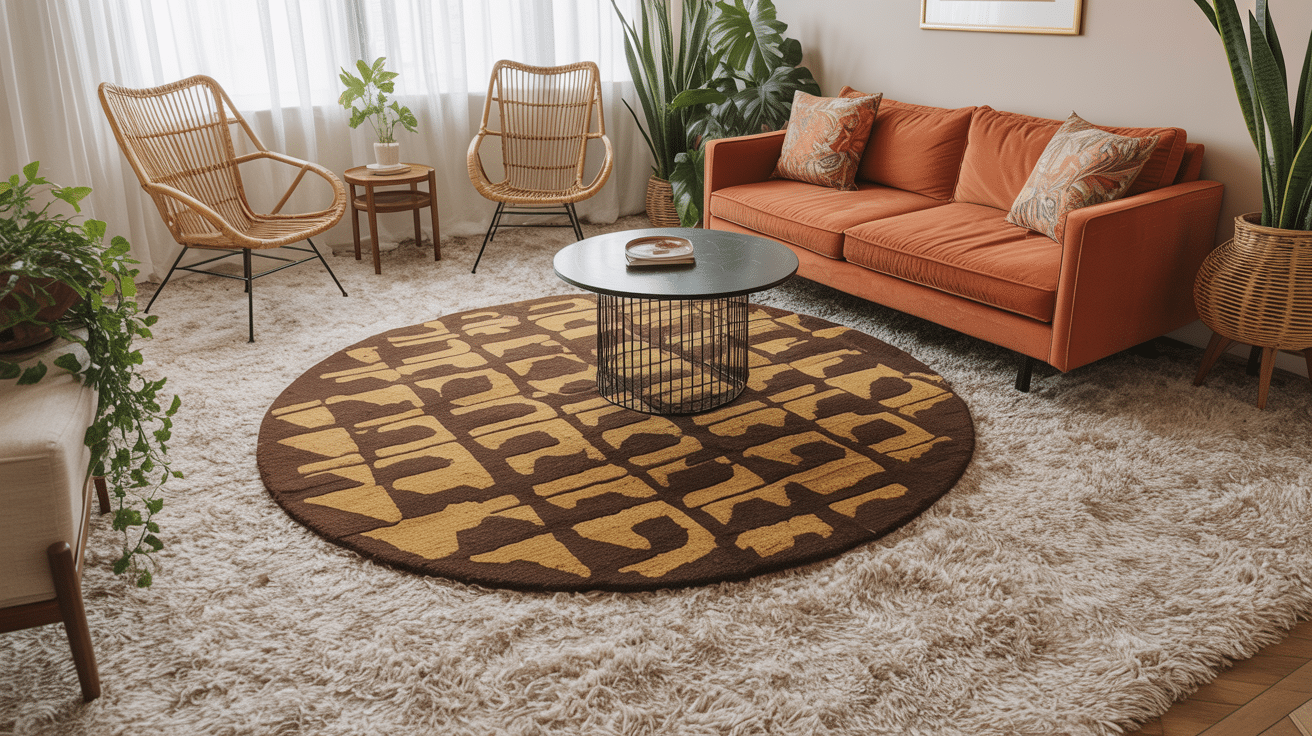
Shag carpets offered a cozy, soft texture underfoot, becoming a must-have feature. Their thick pile provided warmth to living spaces while also showcasing bold colors.
Area rugs were often circular or patterned, adding a groovy floor statement.
3. Statement Wood Paneling
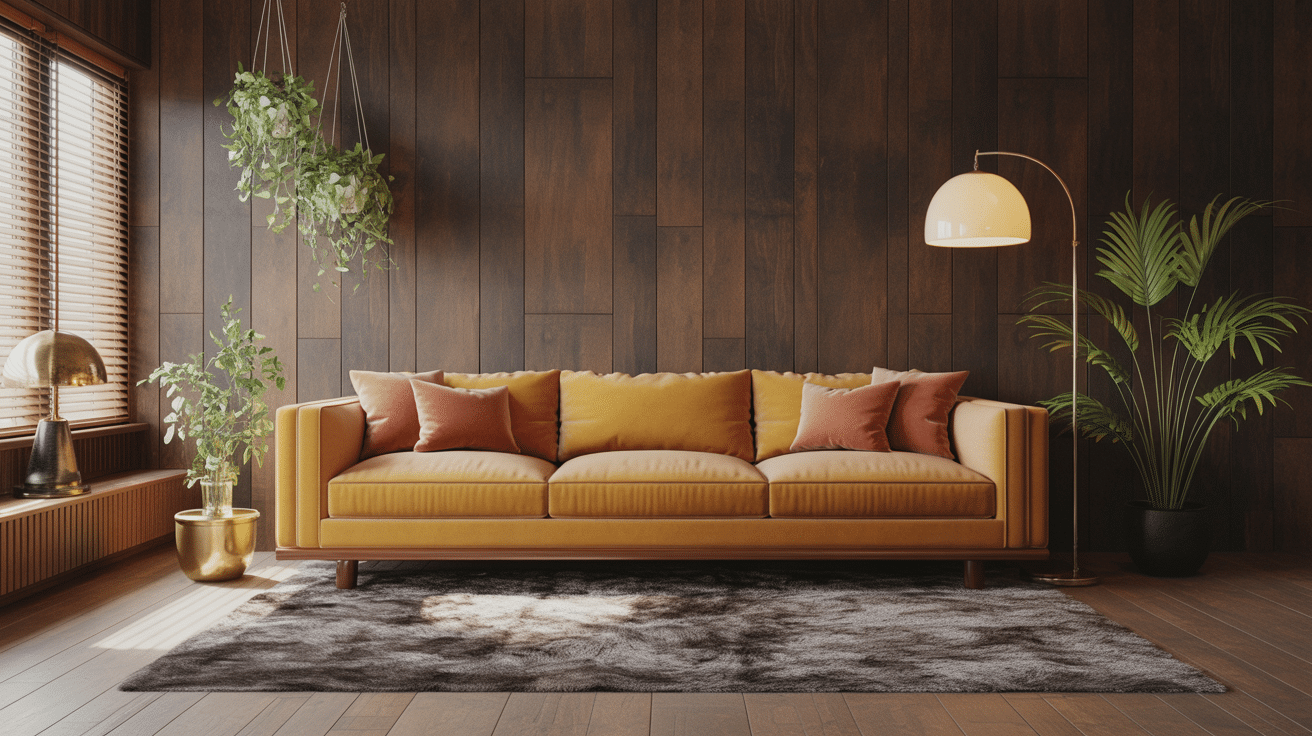
Dark wood paneling was used on walls to create a warm, moody backdrop. Homes often featured full rooms covered in these panels.
While heavy, the look added character, especially when paired with bright 70s furniture and funky accessories.
4. Conversation Pits
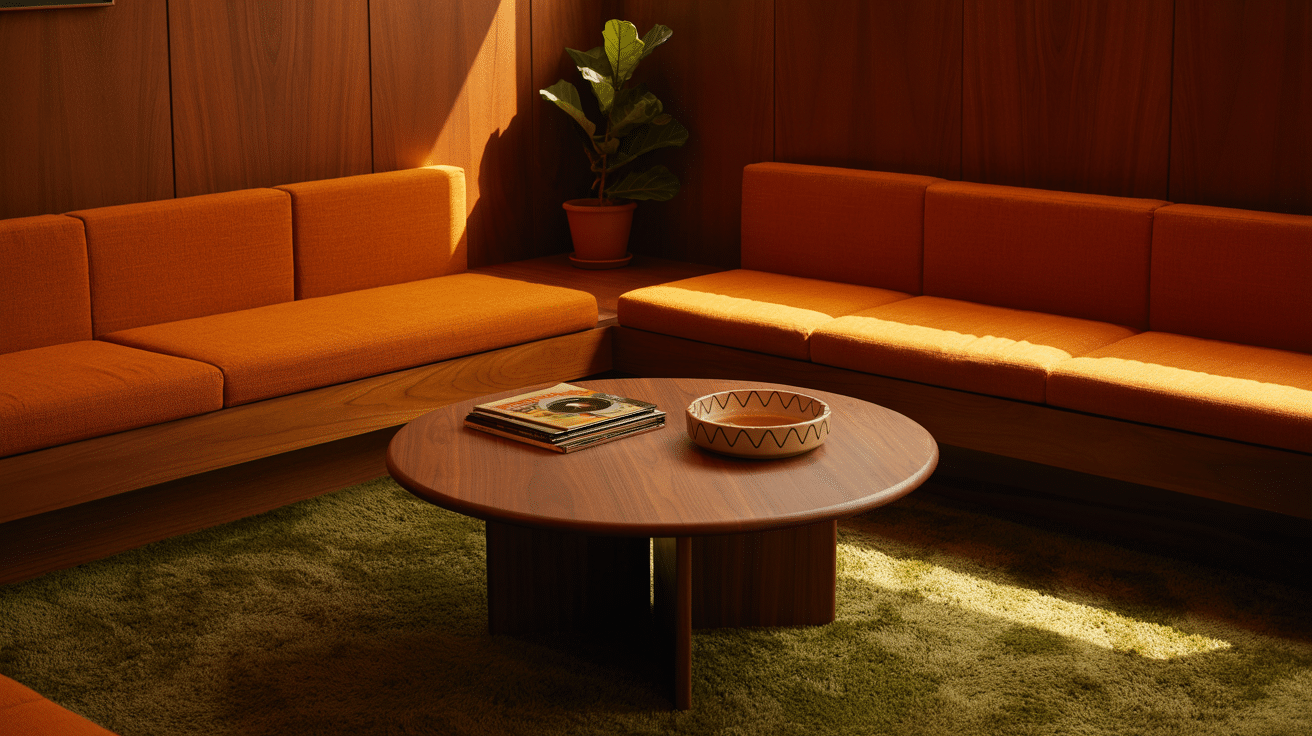
Conversation pits were sunken seating areas built into the floor. They encouraged social gatherings and relaxed chats.
Usually surrounded by cushions or sofas, these spaces created a unique atmosphere that became a signature of the decade’s design style.
5. Sunken Living Rooms
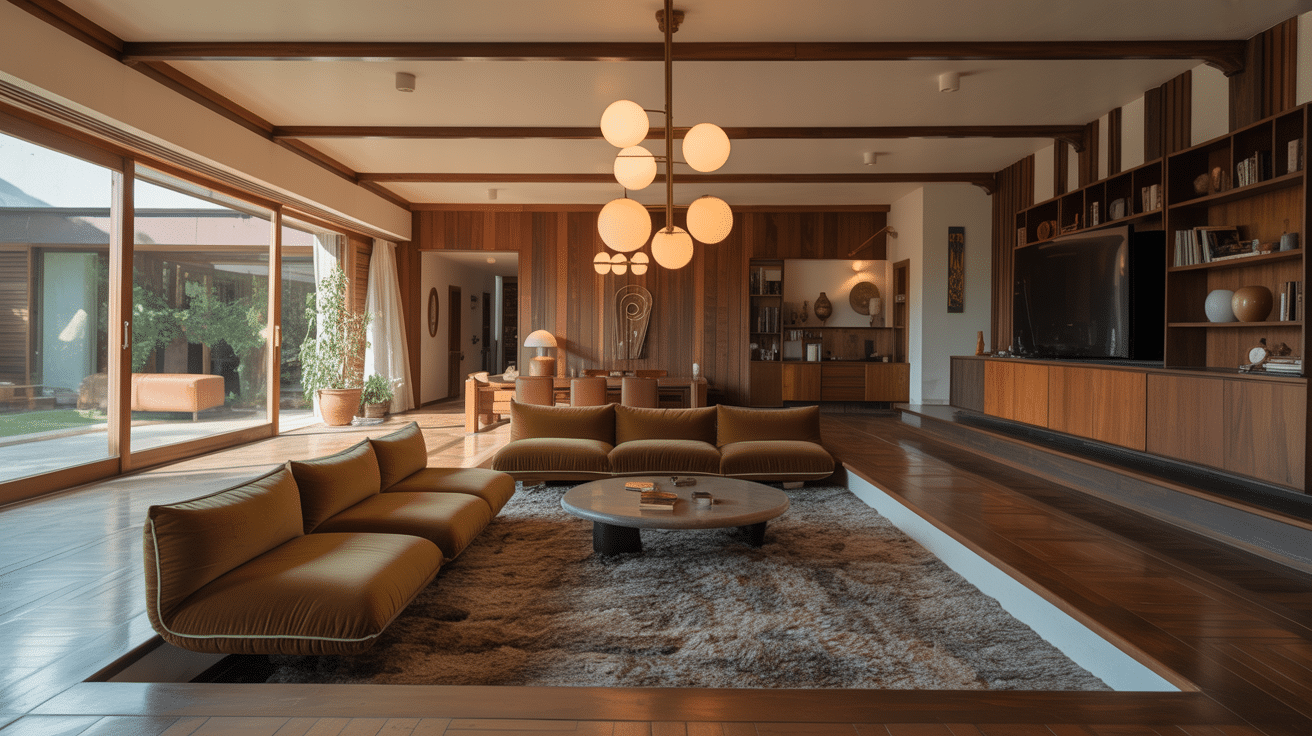
Similar to conversation pits, sunken living rooms gave depth and dimension to open spaces.
They allowed for a natural separation of areas without the need for walls.
Paired with low seating, they created cozy spots for family gatherings, entertaining, or casual relaxation.
6. Macramé Hangings
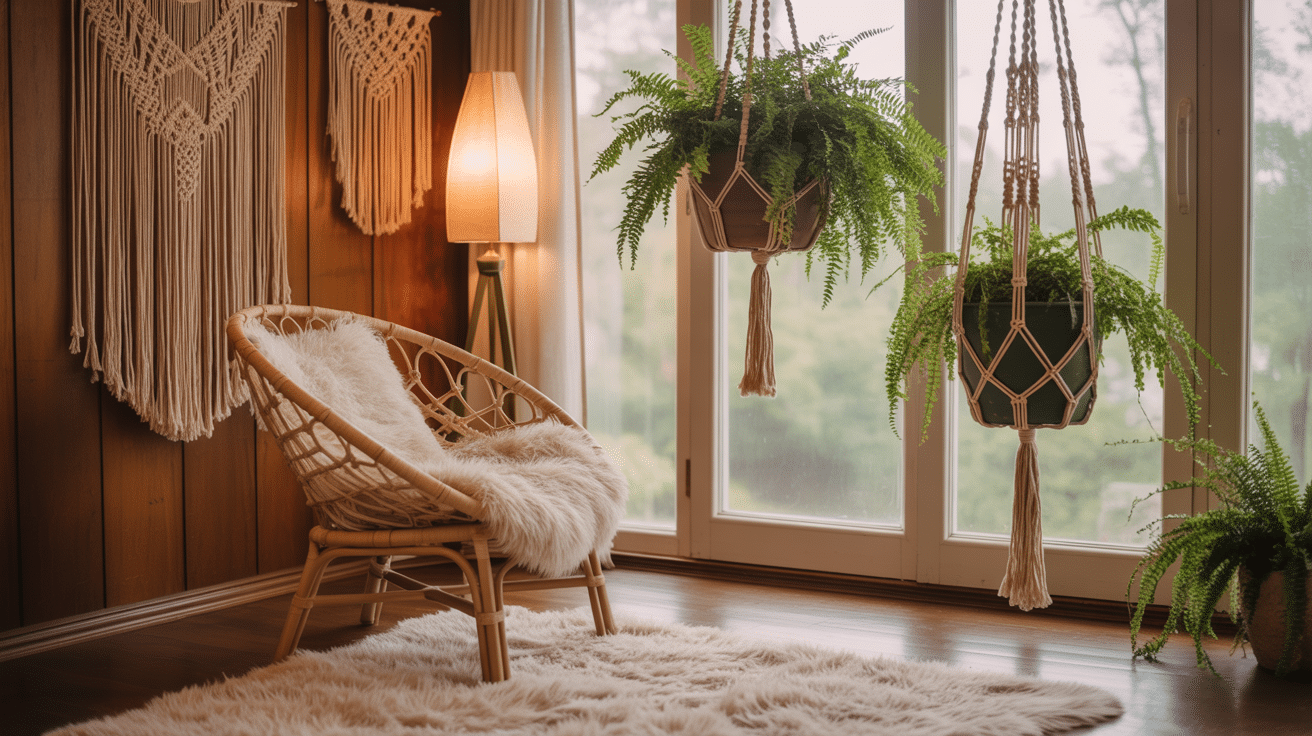
Macramé was a ’70s favorite, often crafted into wall hangings, plant holders, or room dividers. The handmade knotted ropes brought texture and artistry into homes.
They added a natural, personal touch, often paired with wood, plants, and earthy tones.
7. Rattan and Wicker Furniture
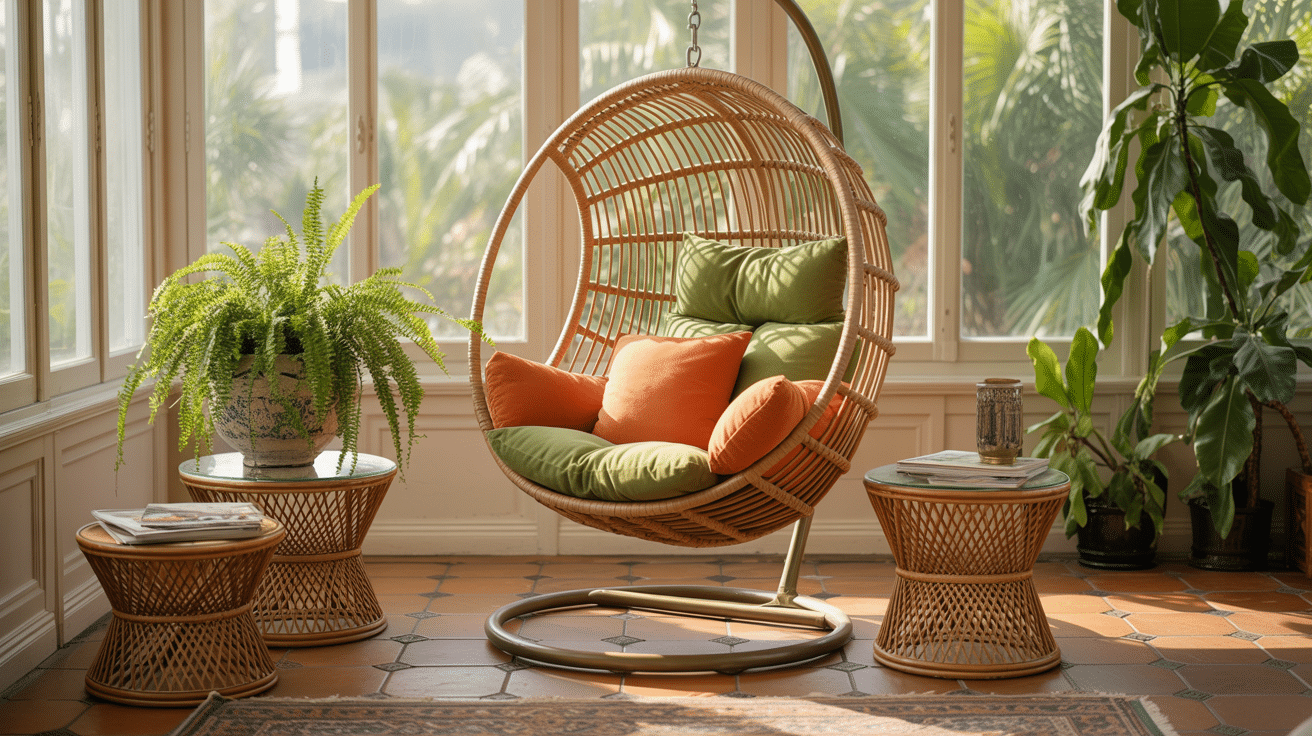
Lightweight yet durable, rattan and wicker furniture brought nature indoors. Chairs, side tables, and headboards made from woven strands added casual charm.
Often used in sunrooms or patios, these pieces give living spaces a breezy, earthy, laid-back look.
8. Avocado Green Kitchen Cabinets
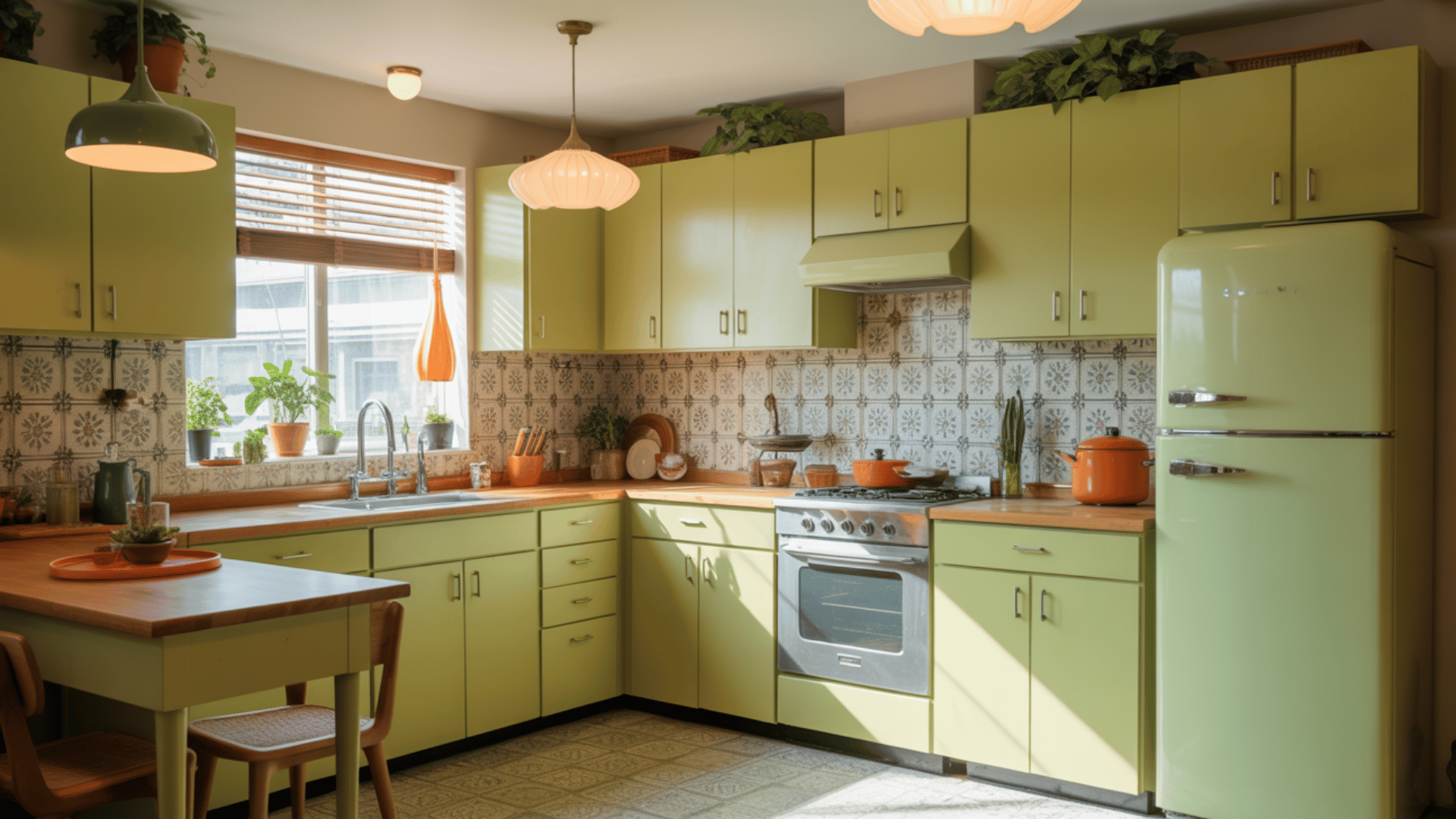
Avocado green was the signature color of the ’70s kitchen.
Cabinets, appliances, and even countertops carried this bold shade. Paired with browns and oranges, it defined the decade’s daring style.
Though divisive today, it remains one of the era’s most recognizable features.
Like this idea? Try Benjamin Moore’s Avocado (2145-10), a rich green that will perfectly fit your 70’s kitchen.
9. Retro-patterned Wallpaper
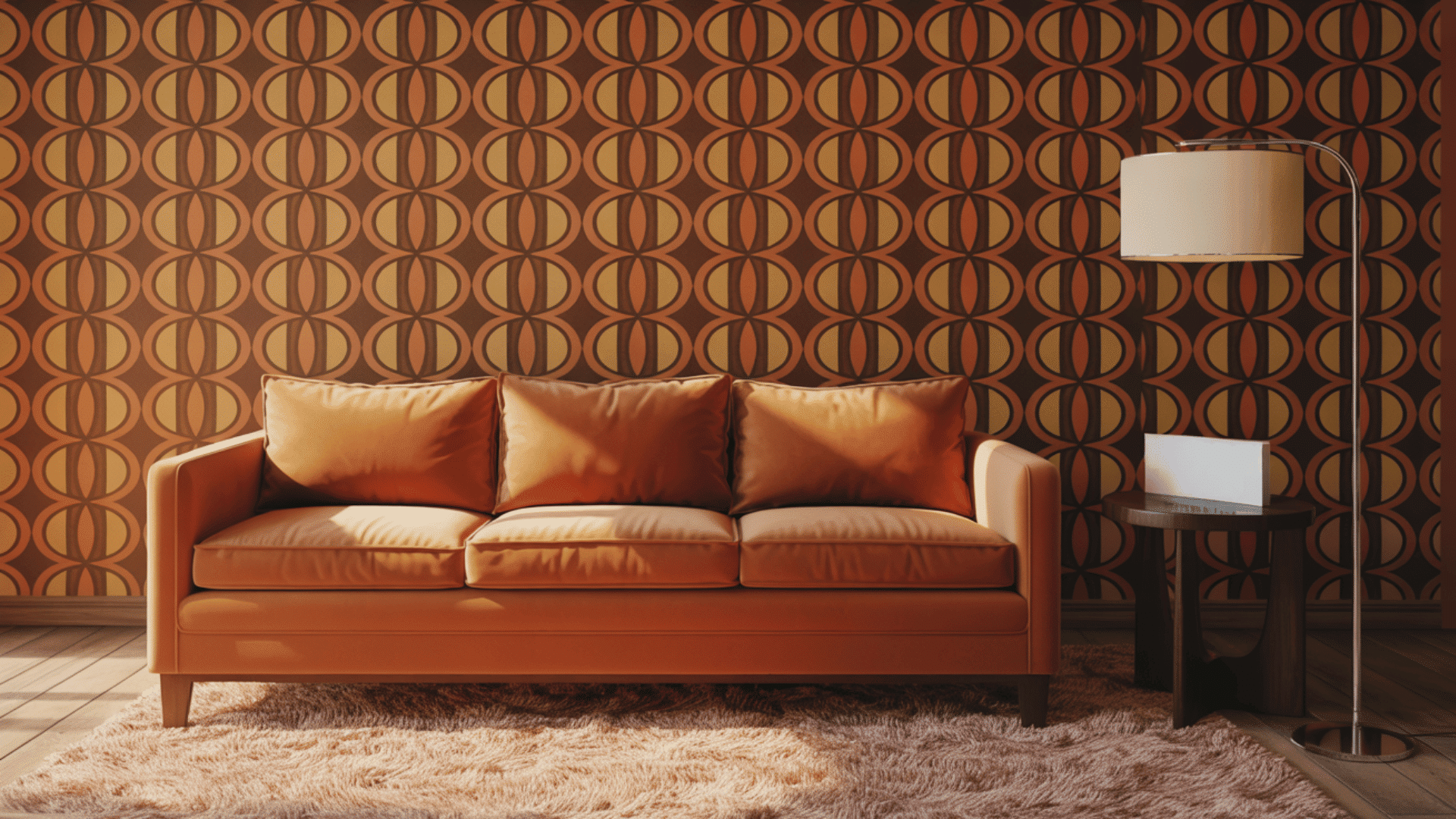
From geometric designs to bold florals, wallpaper made a huge statement.
Patterns often covered entire rooms, creating immersive atmospheres. Bright oranges, yellows, and browns dominated the scene.
Retro wallpaper turned plain walls into lively focal points that reflected the decade’s playful spirit.
10. Orange and Brown Dining Spaces
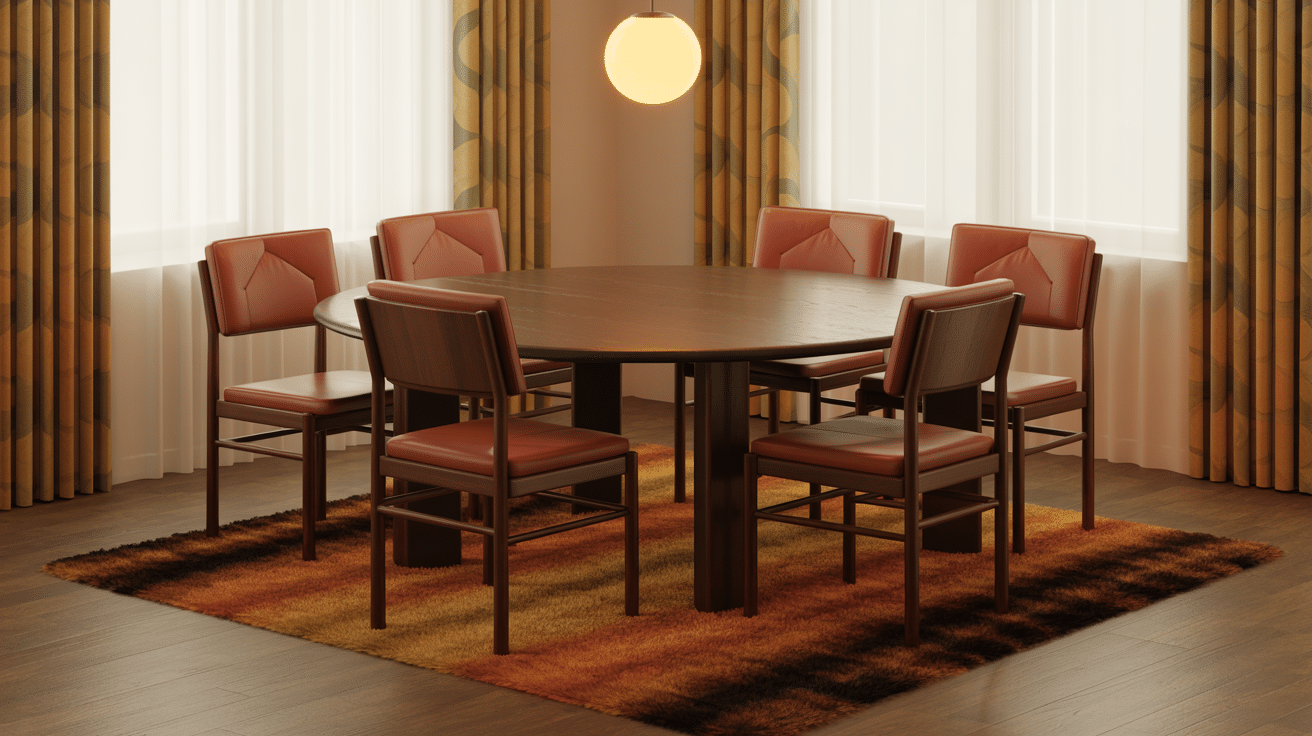
Dining rooms often embraced warm palettes of burnt orange and chocolate brown. These earthy colors created an inviting space for gatherings.
Often combined with wooden furniture, patterned curtains, and low lighting, they perfectly captured the cozy yet stylish 1970s aesthetic.
11. Hanging Chairs
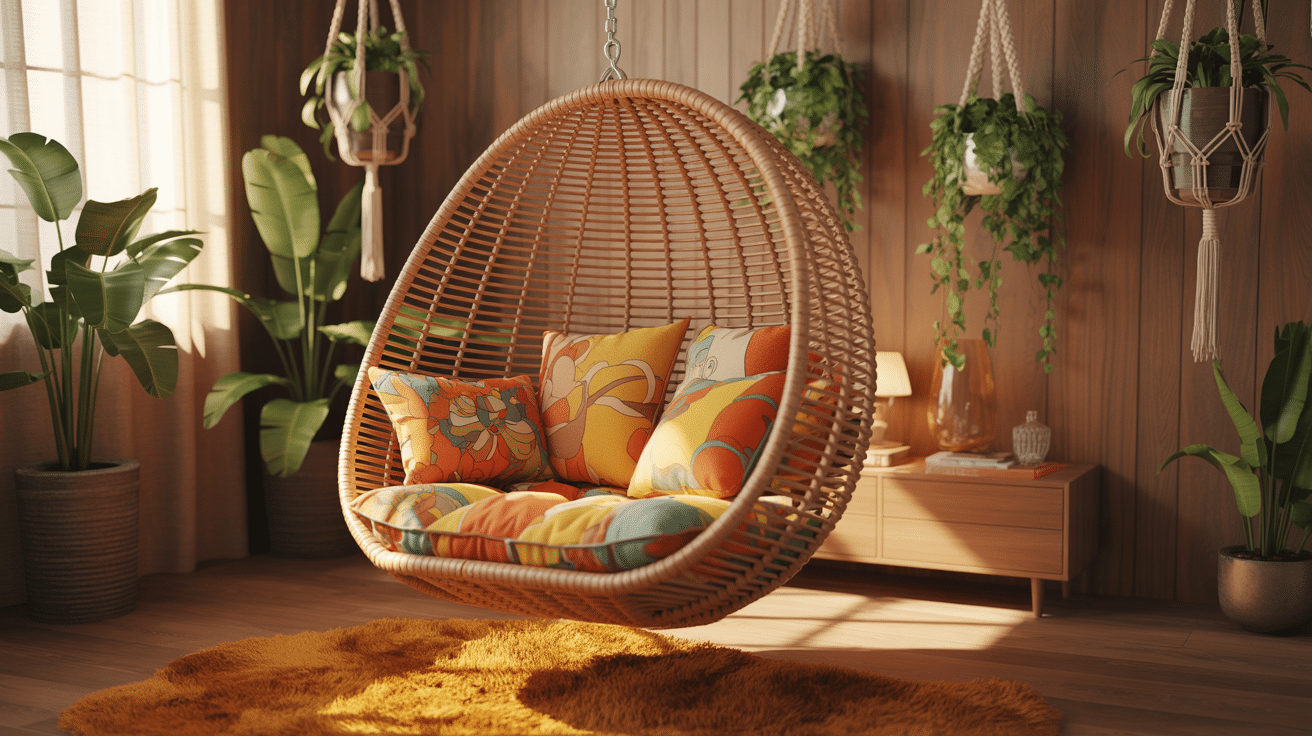
Suspended from ceilings or stands, hanging chairs became statement pieces. Made from wicker or fabric, they were playful and comfortable.
These chairs added movement and whimsy to interiors, often paired with cushions or throws for extra relaxation and charm.
12. Beaded Curtains
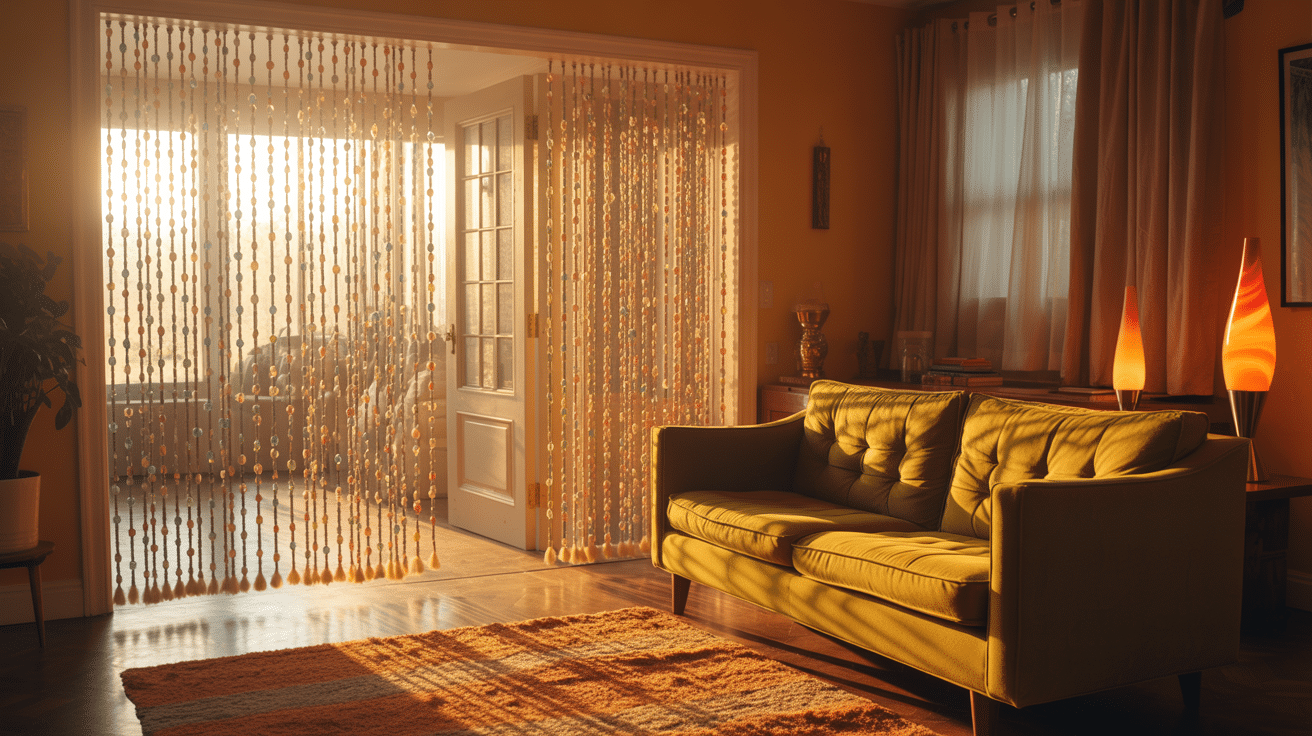
Beaded curtains added a touch of flair to doorways and windows.
Made from wood, glass, or plastic beads, they created visual separation while allowing light to pass through.
Their soft rattling sound when walking through became part of the atmosphere, instantly recognizable as 70s style.
13. Velvet Sofas
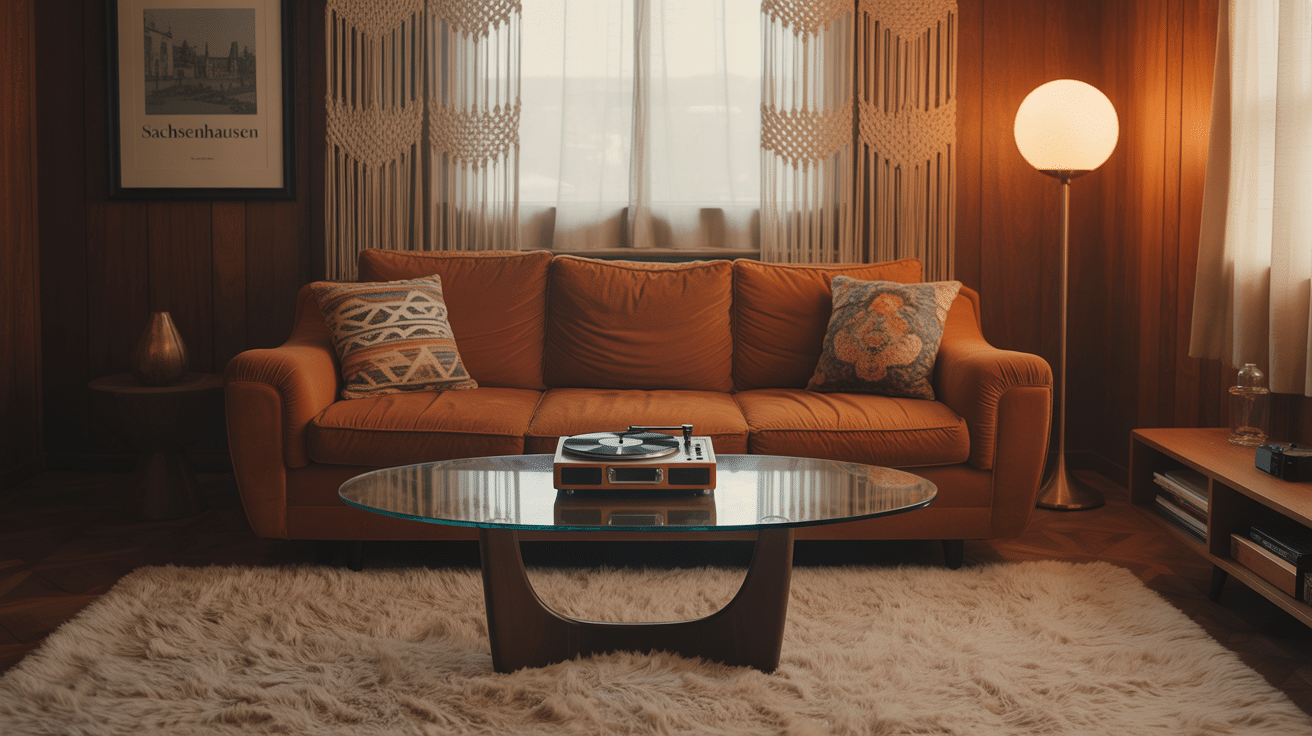
Velvet-covered sofas in bold shades like orange, gold, or emerald. Soft, plush, and luxurious, these sofas made a strong statement.
They became the centerpiece of many 70s living rooms, balancing comfort with dramatic visual appeal in every home.
14. Low Seating Arrangements
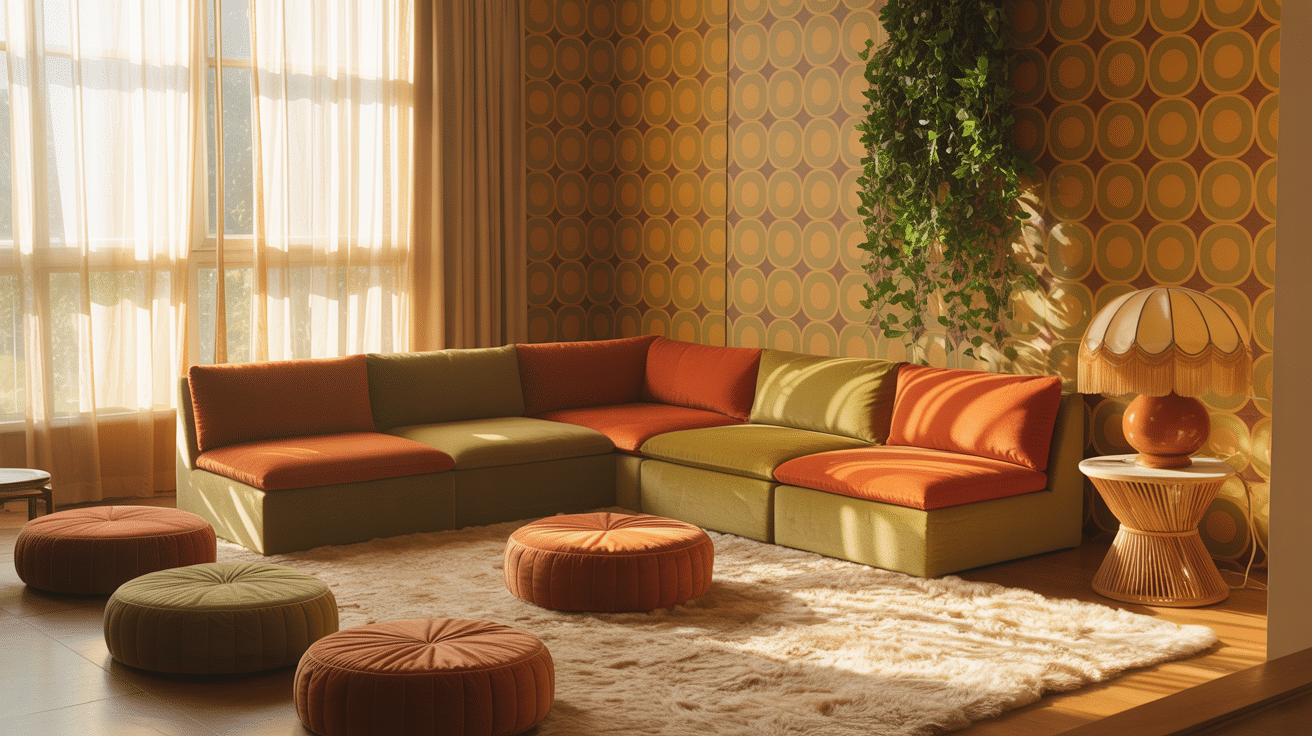
Low couches, floor cushions, and poufs created casual seating close to the ground. This style encouraged relaxed socializing and a sense of comfort.
Combined with shag rugs or patterned carpets, it created living spaces that had a cozy, intimate 70s gathering atmosphere that people loved.
15. Brass and Chrome Accents
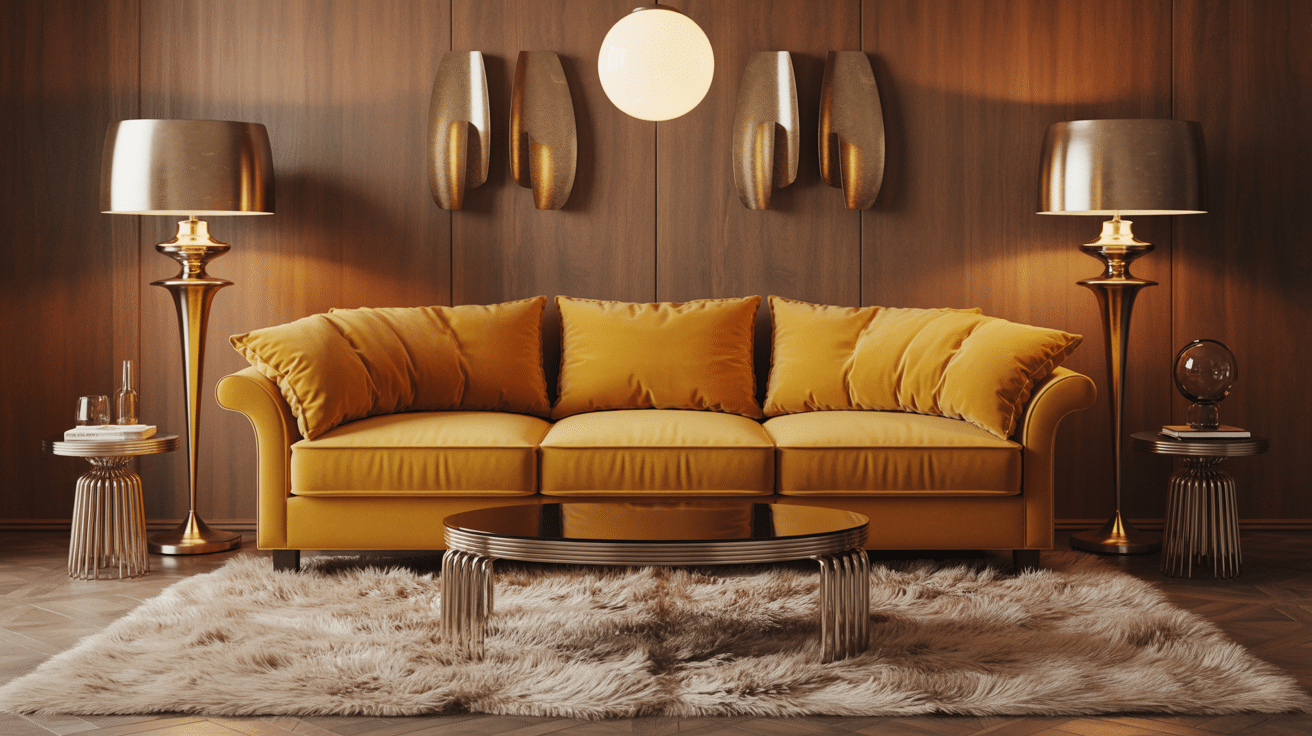
Metallic touches were everywhere in 70s homes. Brass added warmth, while chrome gave a shiny, futuristic edge. Both were used on lamps, tables, and decor accessories.
These accents brightened up interiors and reflected the decade’s playful sense of style.
16. Lucite Furniture
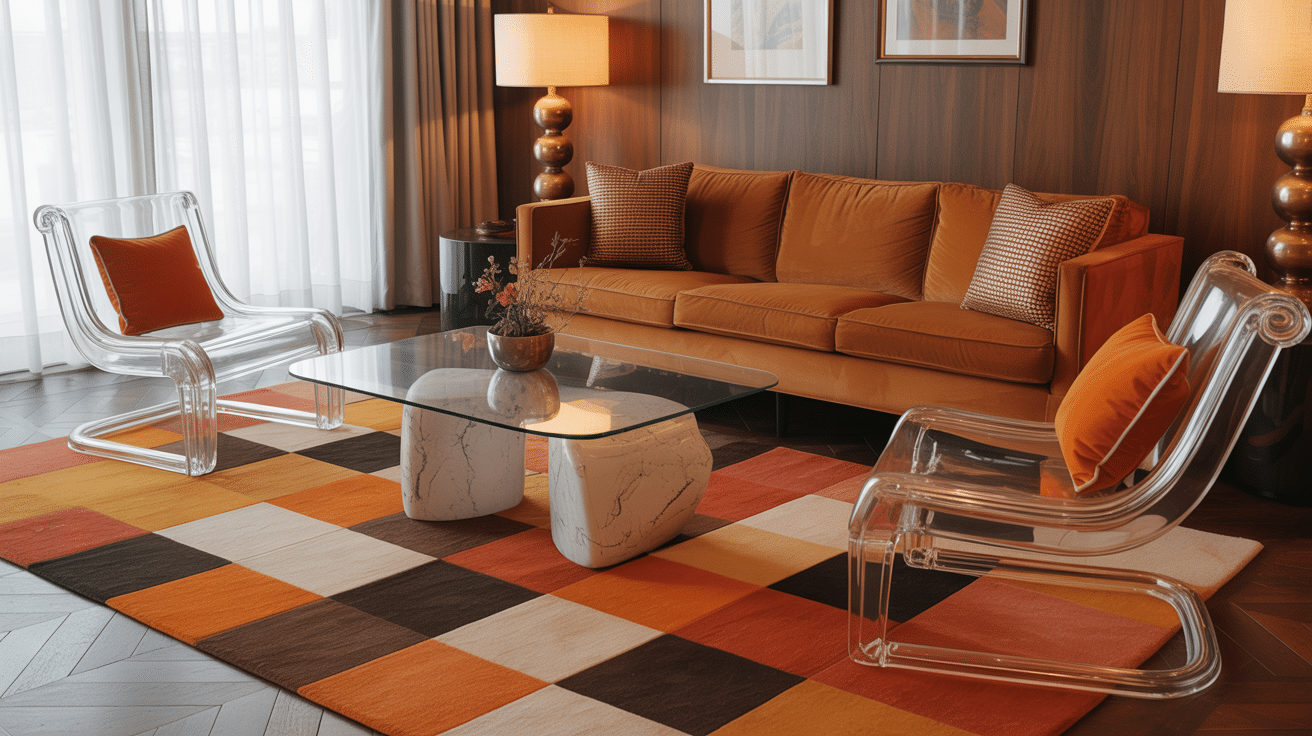
Clear Lucite tables, chairs, and shelving offered a sleek look that felt modern. Transparent pieces made rooms appear larger and lighter.
They often contrasted with the era’s bold colors, adding balance while still reflecting the playful experimental spirit of 70s design.
17. Funky Geometric Rugs
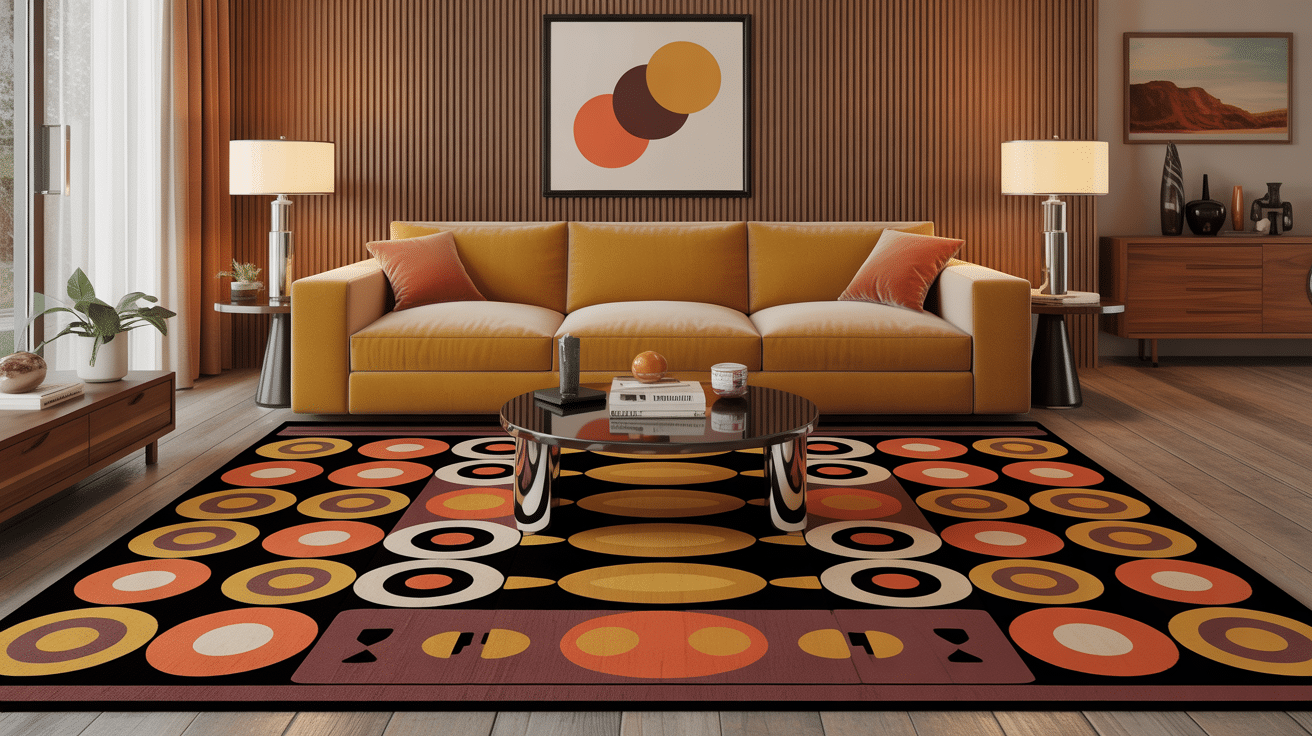
Geometric rugs with bold, repeating shapes became design staples. Circles, squares, and zigzags in bright contrasting colors brought energy to any room.
These rugs weren’t just floor coverings; they were focal points that expressed the creativity of the 70s.
18. Lava Lamps
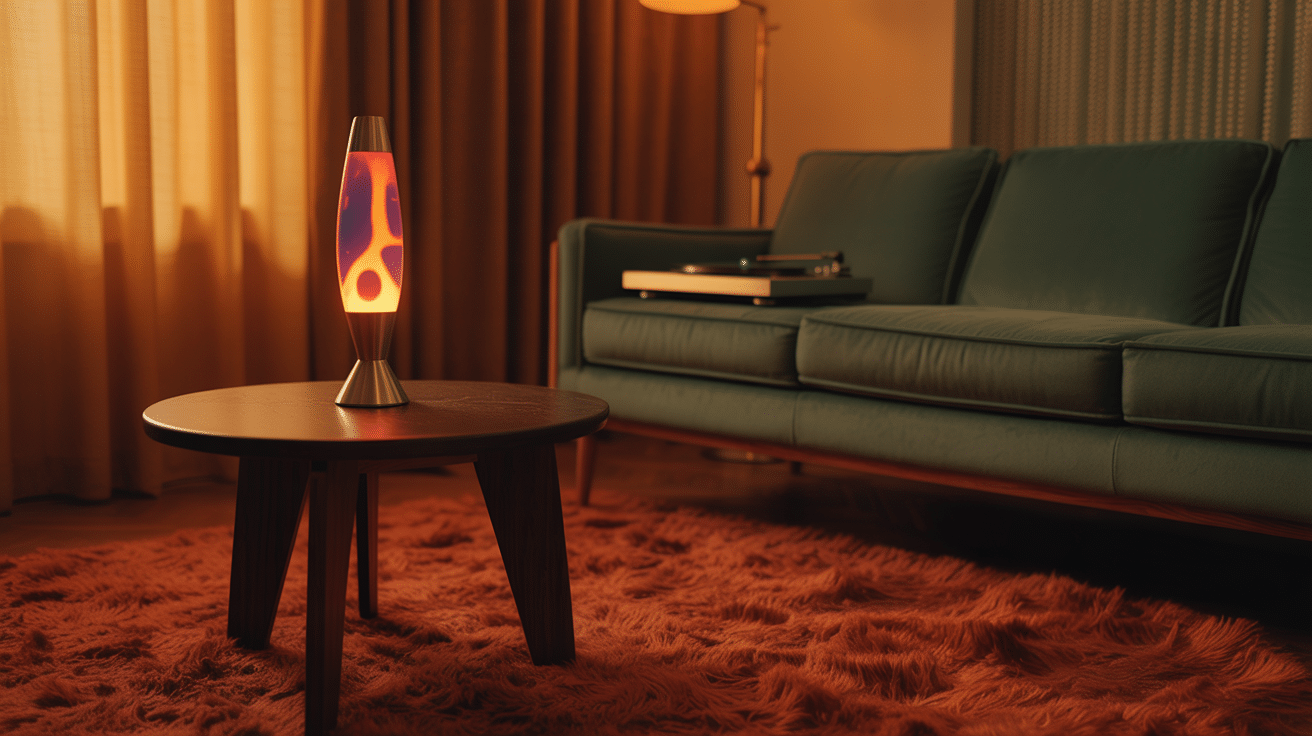
Lava lamps provided soft, mesmerizing light. Colored blobs floated up and down in liquid, making them fun conversation starters.
They weren’t only decorative but also reflected the playful, laid-back mood of the time. No 70s room felt complete without one.
19. Pendant and Globe Lights
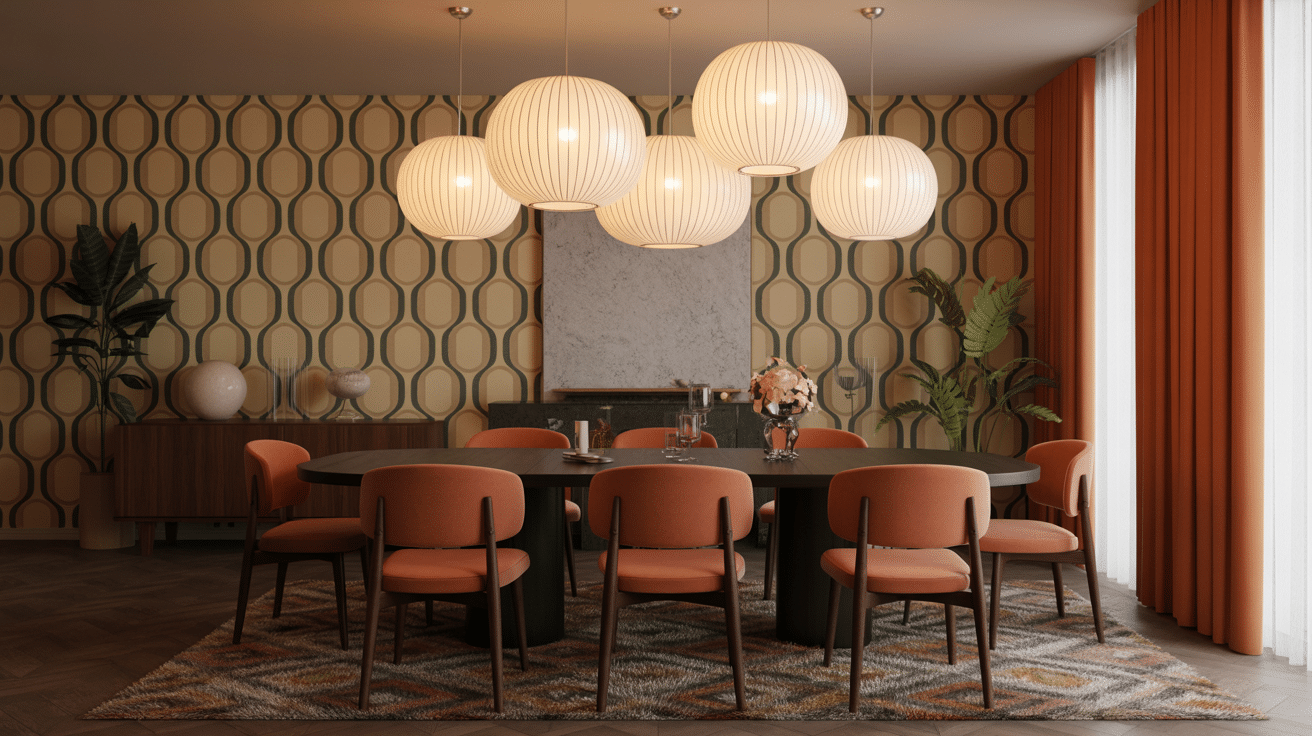
Pendant lights and spherical globe fixtures hung over dining tables or living rooms. Their shapes added drama while creating cozy pools of light.
Often finished in metal or glass, they gave interiors an unmistakable 70s flair that feels nostalgic today.
20. Plant-heavy Corners
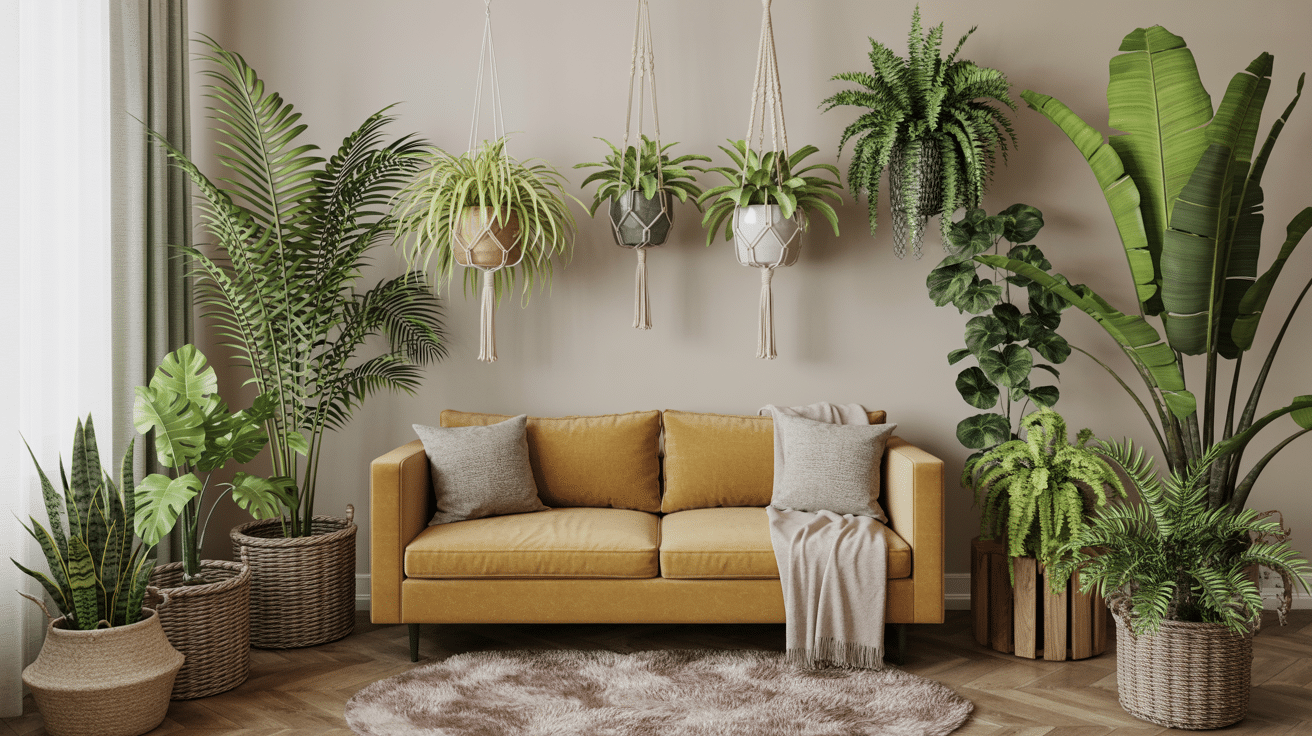
Large houseplants, such as ferns, palms, and spider plants, dominated homes of the 1970s.
They were often grouped together in corners, creating lush, green spaces.
Hanging planters and macramé holders made them even more popular, reinforcing the era’s love for bringing nature inside.
21. Earth-toned Bathrooms
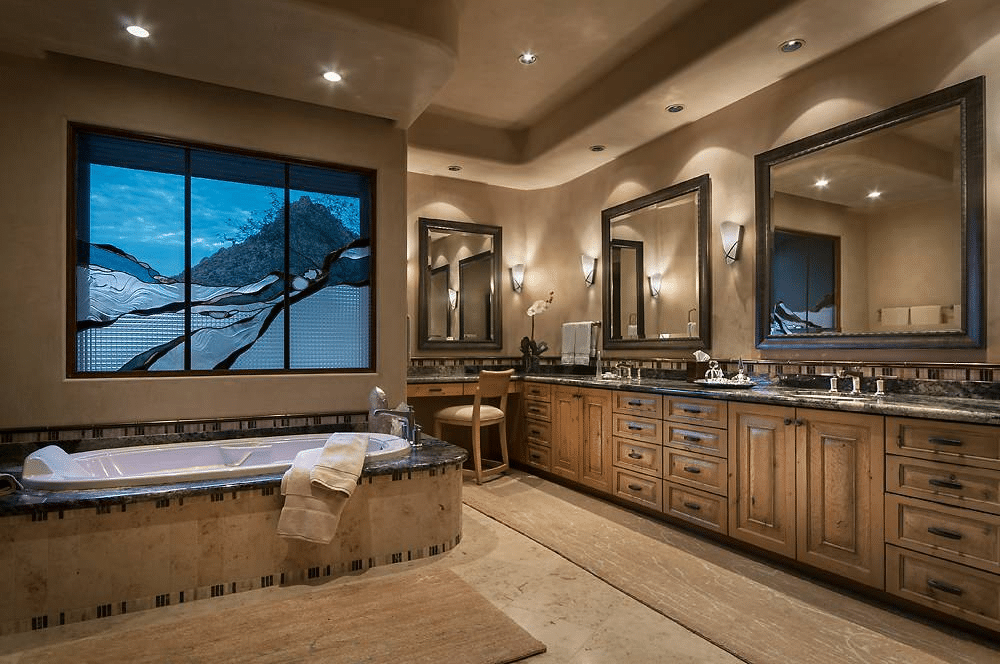
Bathrooms often featured tones of brown, beige, and green. Tiles, sinks, and tubs followed these natural hues. Paired with patterned floors and bold curtains, the look was cozy yet distinct.
Earth tones made even small bathrooms feel warm and inviting.
22. Patterned Tiles
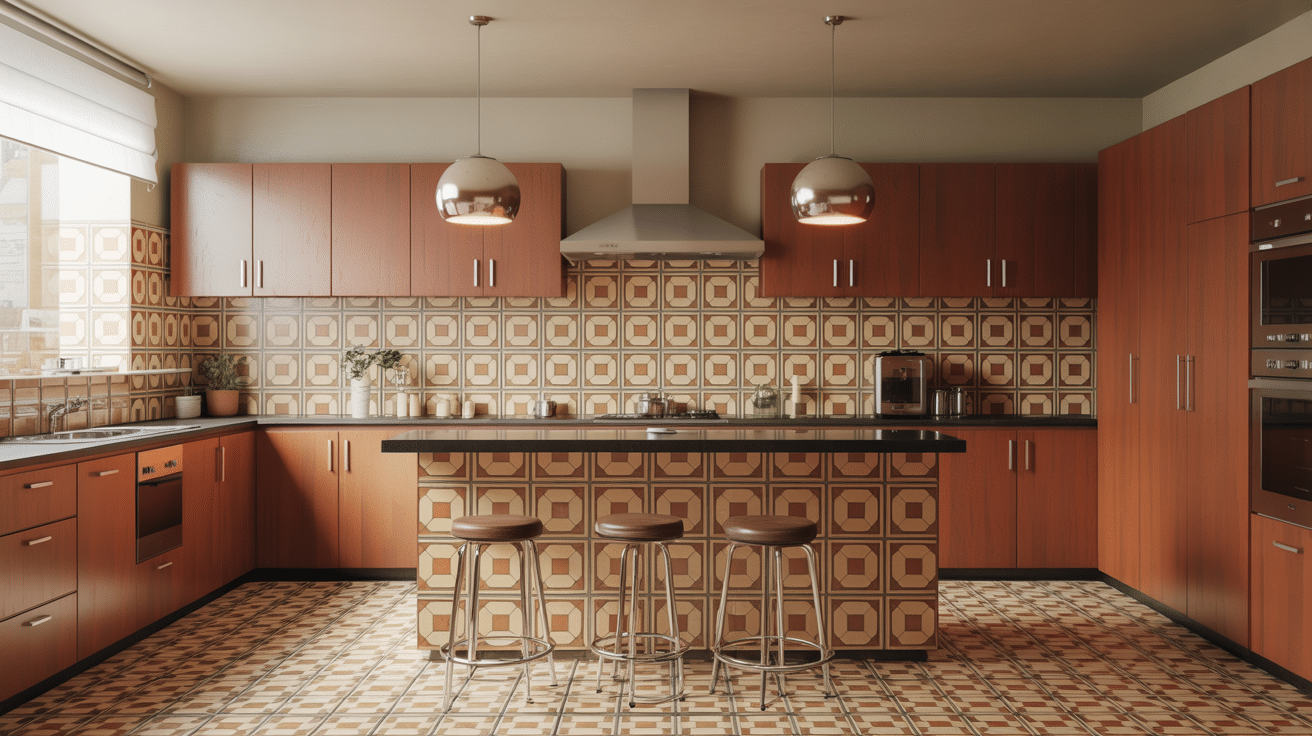
Colorful tiles decorated kitchens, bathrooms, and entryways.
Patterns ranged from floral to geometric, often covering entire surfaces. Terracotta and bold glazed finishes were popular.
These tiles added personality, ensuring even the most functional spaces had a strong visual presence in 70s homes.
23. Mirrored Walls
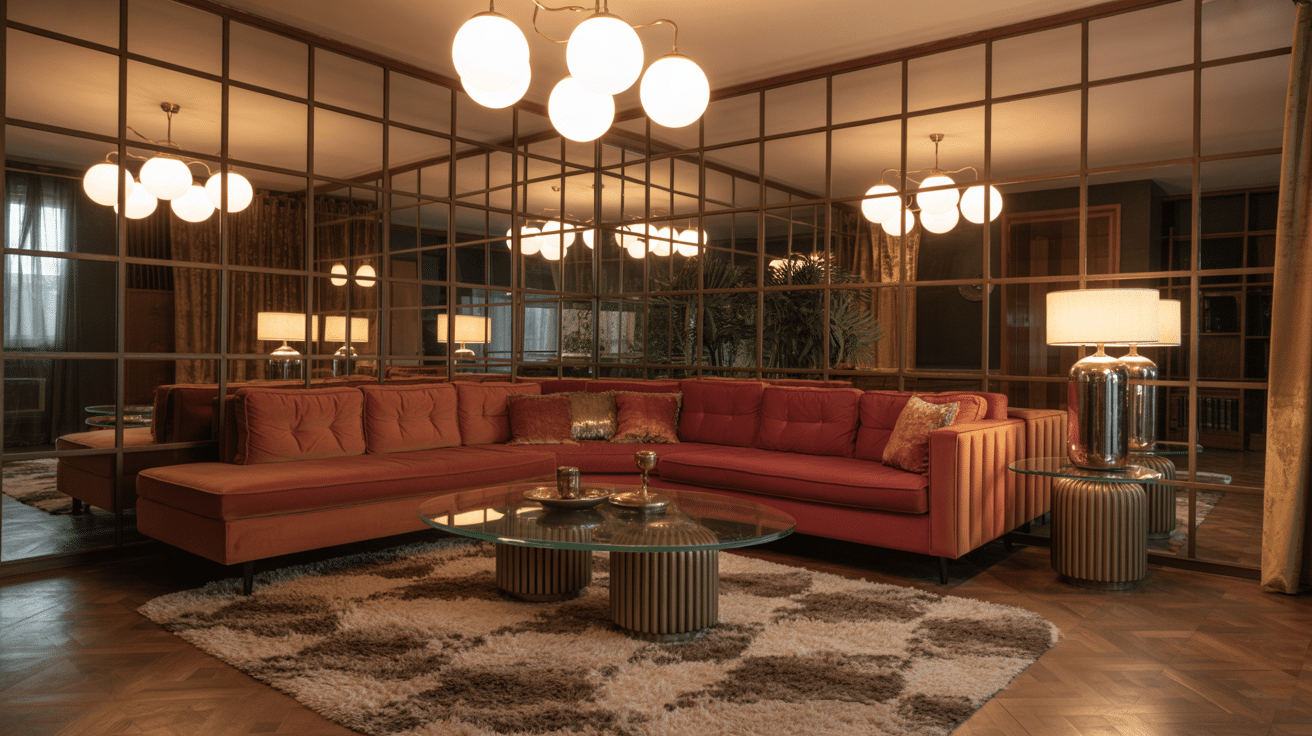
Large mirrored panels turned walls into reflective surfaces. They created the illusion of bigger rooms while adding glamor.
Common in living or dining areas, mirrored walls amplified lighting and decor. This dramatic design choice made homes feel brighter and bolder.
24. Pop Art Posters
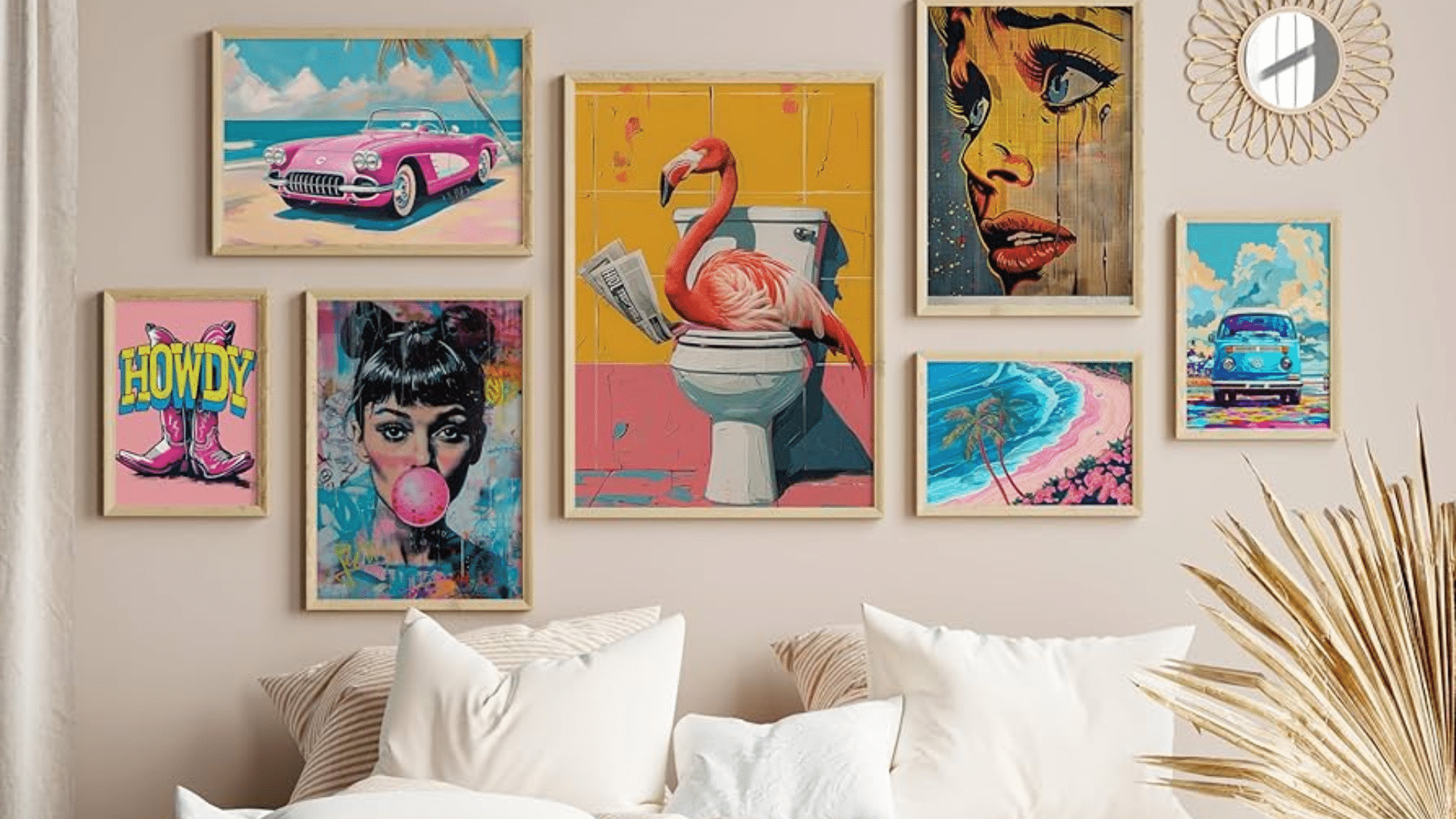
Inspired by artists like Andy Warhol, pop art posters became a popular and affordable form of wall decor. Bright, graphic prints celebrated popular culture and added a touch of humor.
They changed plain walls into bold statements, expressing individuality and creativity during the lively 1970s.
25. Bean Bag Chairs
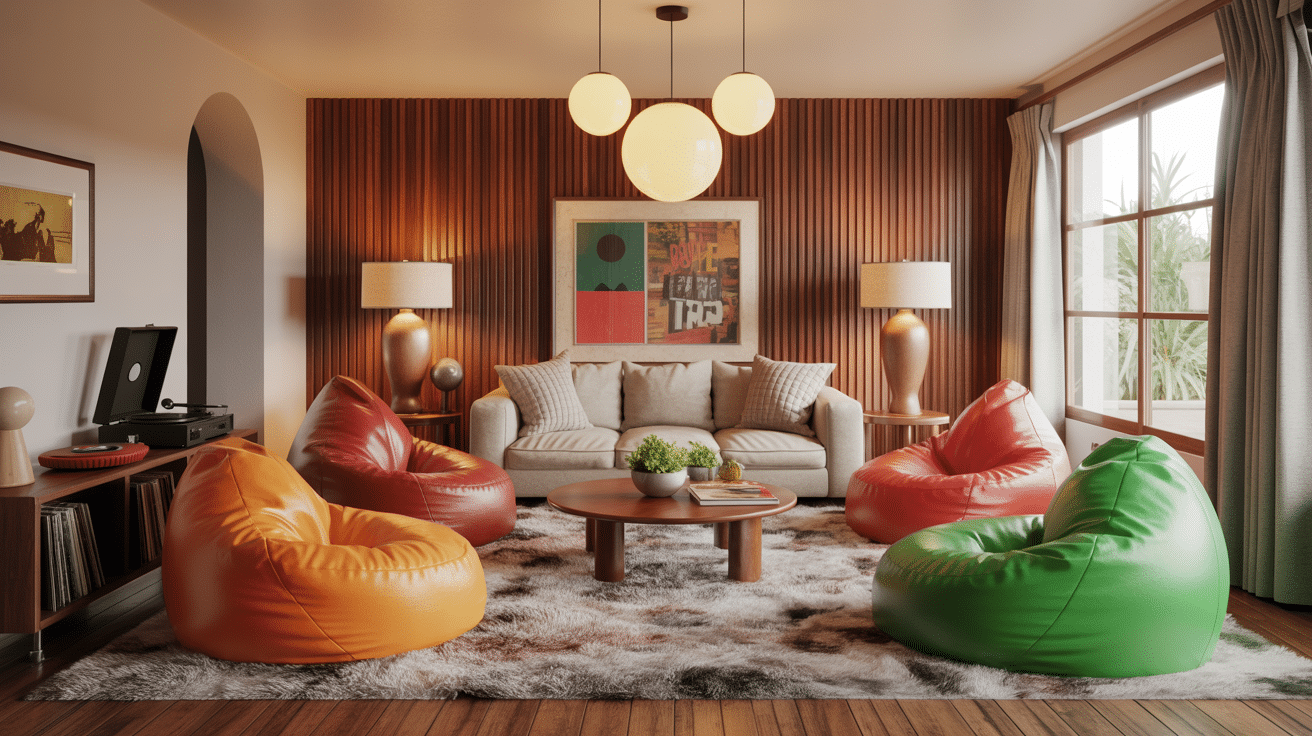
Bean bag chairs were a fun and affordable seating option for people of all ages. Their soft, shape-shifting design made them casual and comfortable.
Brightly colored covers matched the bold ’70s palette, making bean bags a staple in living rooms, playrooms, and student apartments everywhere.
26. Record Players and Vinyl Displays
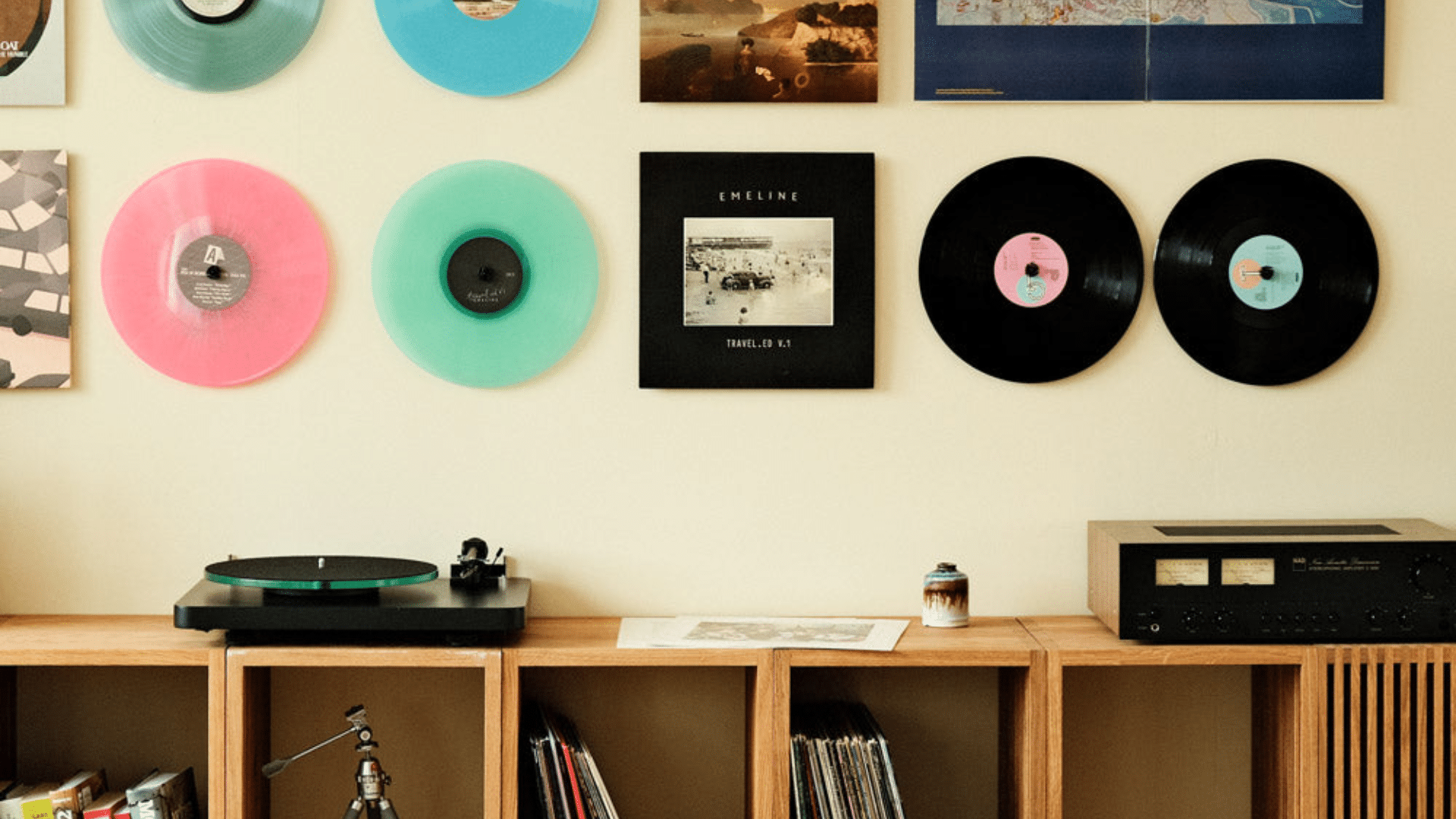
Music was central to life in the 1970s, and record players often held pride of place. Shelves displayed vinyl covers as art.
Beyond function, this decor celebrated lifestyle and taste, creating living rooms filled with sound, style, and cultural expression.
27. Built-in Bars
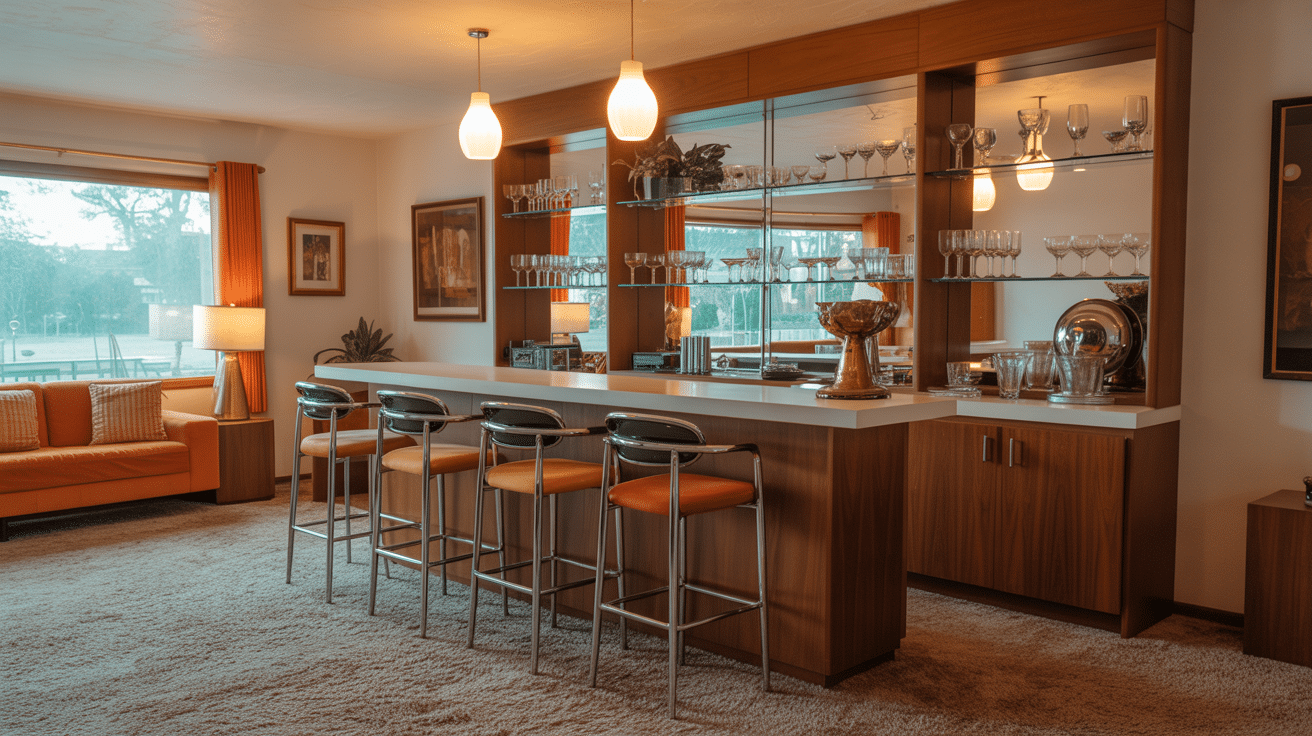
Entertaining at home was popular, and built-in bars became a trendy feature. Tucked into living or dining rooms, they held glasses, bottles, and mixers.
Often finished in wood or mirrored surfaces, they encouraged gatherings while adding a stylish touch to interiors.
28. Arched Doorways
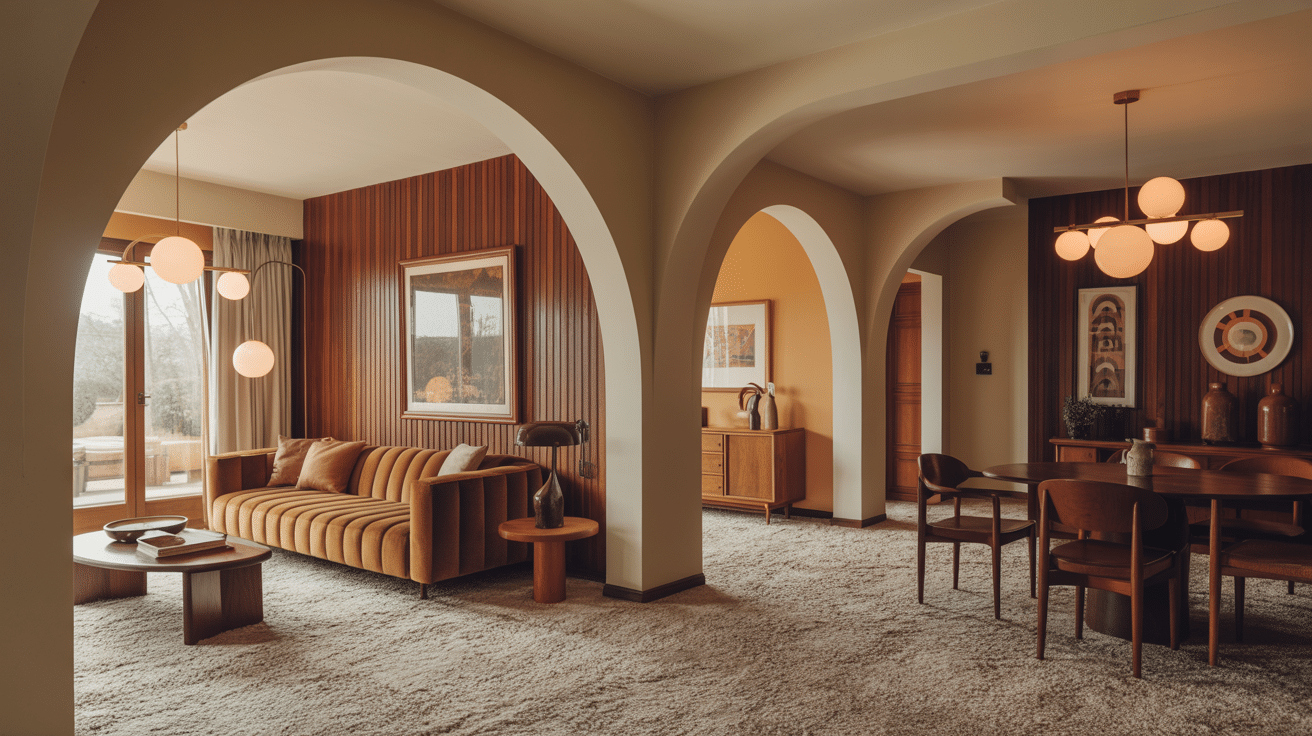
Arched shapes softened interior architecture. Doorways and entryways with curves replaced sharp edges.
They created a sense of flow between rooms while adding visual interest.
This simple architectural detail gave homes a timeless, warm, and inviting 70s-inspired atmosphere.
29. Glass-topped Tables
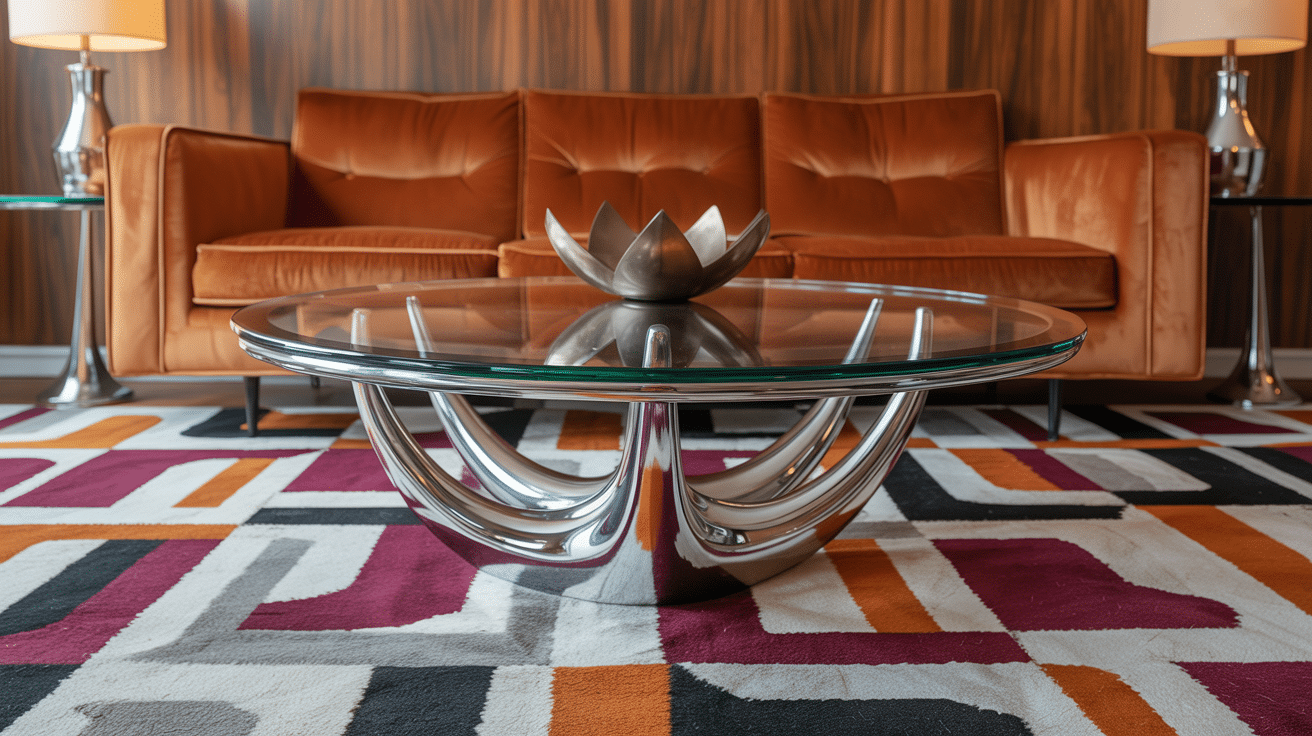
Glass tables with wooden or chrome bases were everywhere. Clear tops made spaces feel open while showcasing bold rugs underneath.
They were practical yet stylish, balancing the heavy colors and textures found in 70s interiors with a lighter furniture option.
30. Textured Ceilings
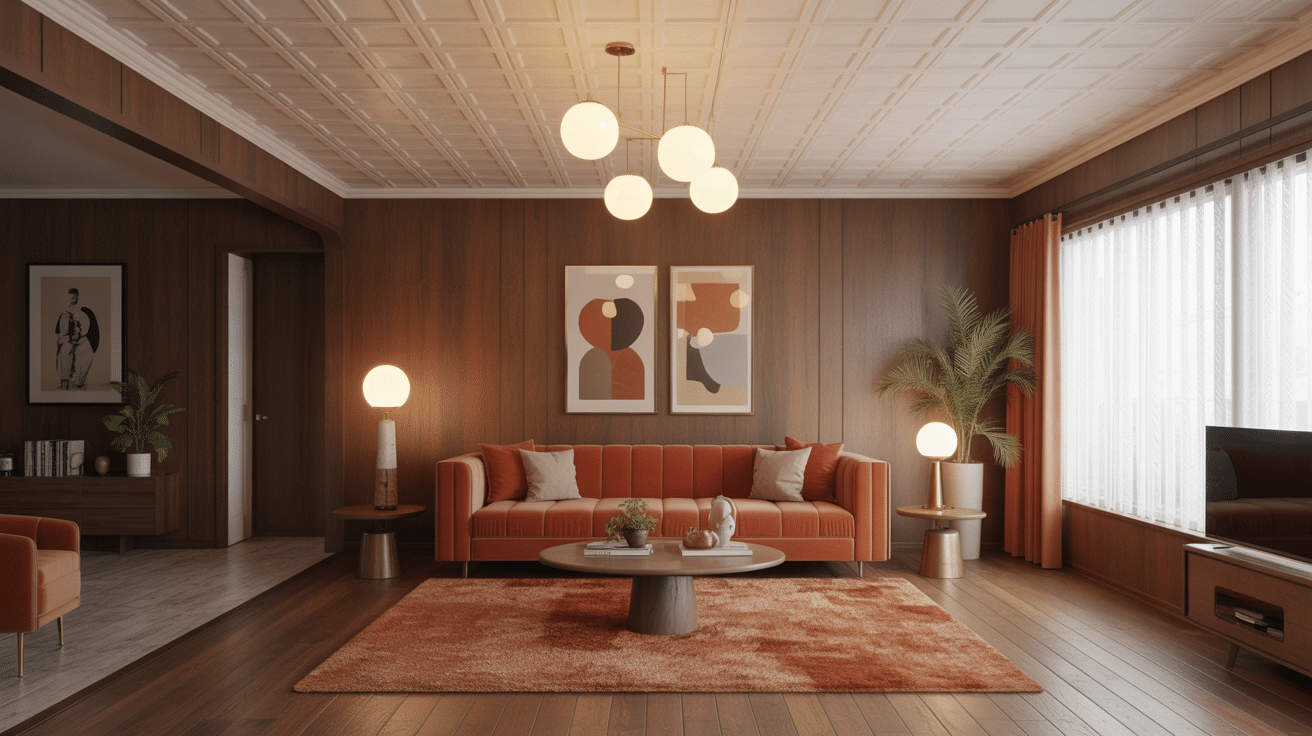
Many homes built in the 1970s featured textured ceilings, often in a popcorn or patterned style.
These finishes added visual depth while helping with sound absorption.
Though less common today, they remain a recognizable retro detail that defined the decade’s unique interior design choices.
31. Woven Baskets for Storage and Style
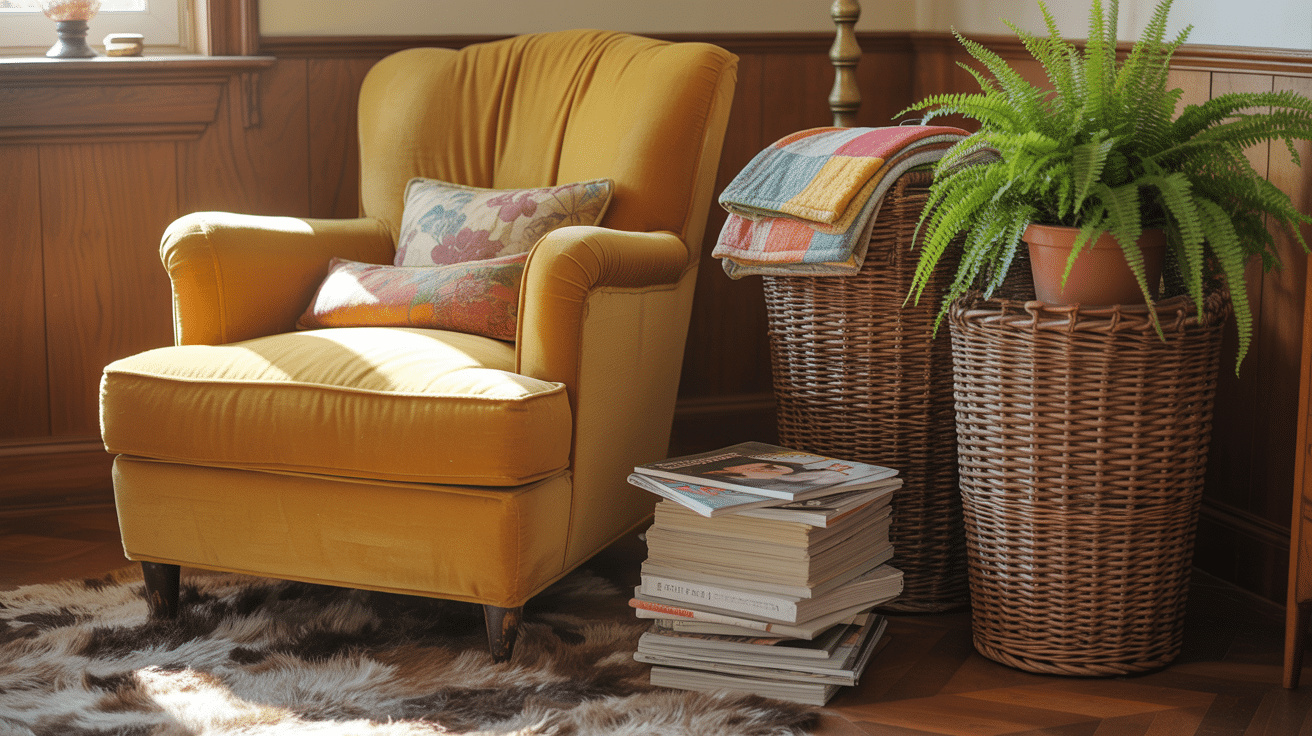
Woven baskets offered both function and decoration. Used for magazines, blankets, or plants, they fit naturally into 70s homes.
Their earthy tones and handmade feel matched the decade’s love for natural materials, adding warmth and practicality in one piece.
How to Add 70s Decor to Modern Homes
Adding seventies flair doesn’t mean creating a time capsule. Smart mixing brings 70s interior vibes that feel fresh and current.
- Start with One Statement Piece: Add a burnt orange velvet chair or mustard throw pillows. A single retro lamp changes corners without overwhelming the existing style.
- Shop Vintage Markets and Thrift Stores: Find unique pieces with real character at budget-friendly prices. Quality reproductions work too for modern sizing needs.
- Try Simple DIY Projects: Create macramé plant hangers or paint accent walls in earthy tones for a natural look. Update existing furniture with rattan details.
- GraduallyIntroduce Textures: Start with small shag rugs or wooden accents. Layer in more elements once you’re comfortable with the look.
- Focus on One Room: Master the style in a single space before expanding throughout your home.
Conclusion
The 70s house interior trends we’ve seen prove that good design never truly goes out of style.
From conversation pits to macramé wall hangings, these iconic elements offer countless ways to add warmth and personality to your space.
Start small with one statement piece, such as the burnt orange velvet chair you’ve been eyeing. Visit your local thrift store this weekend and see what treasures await.

